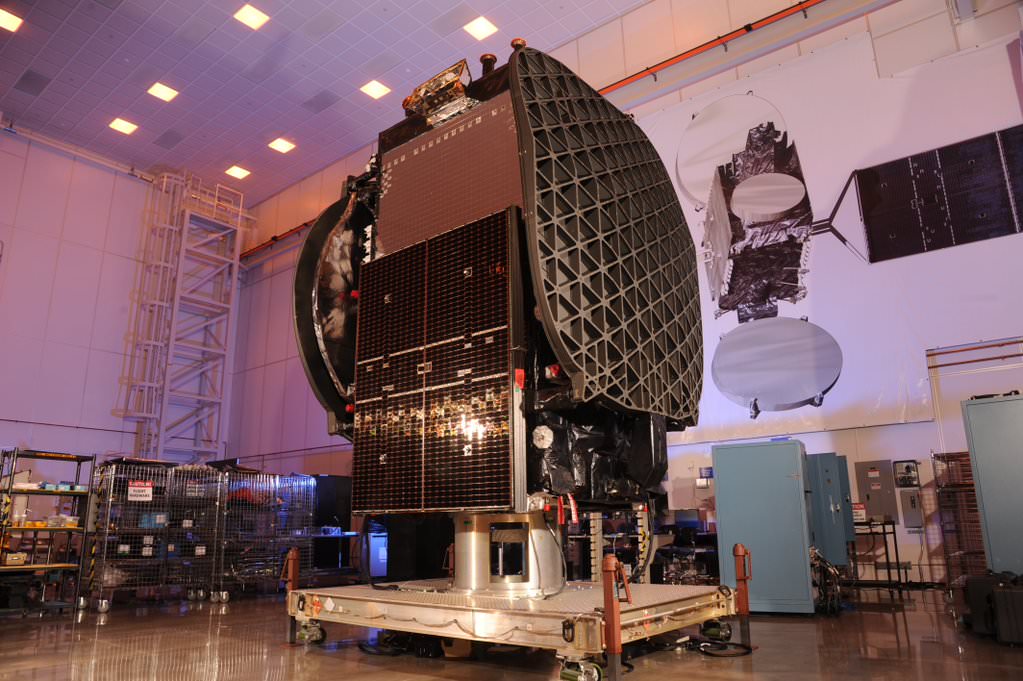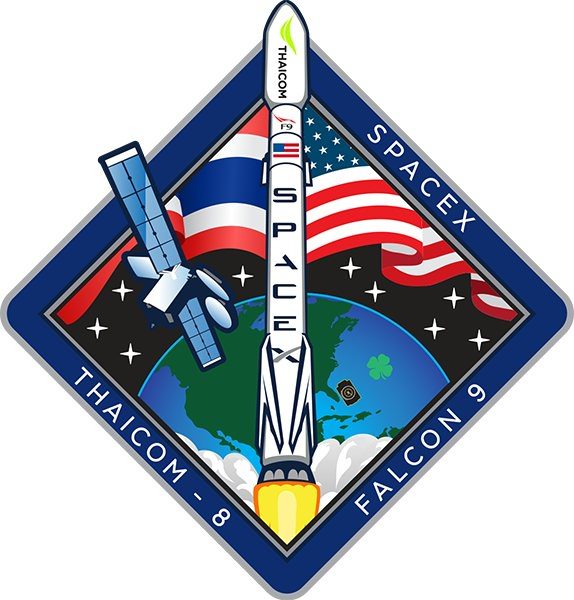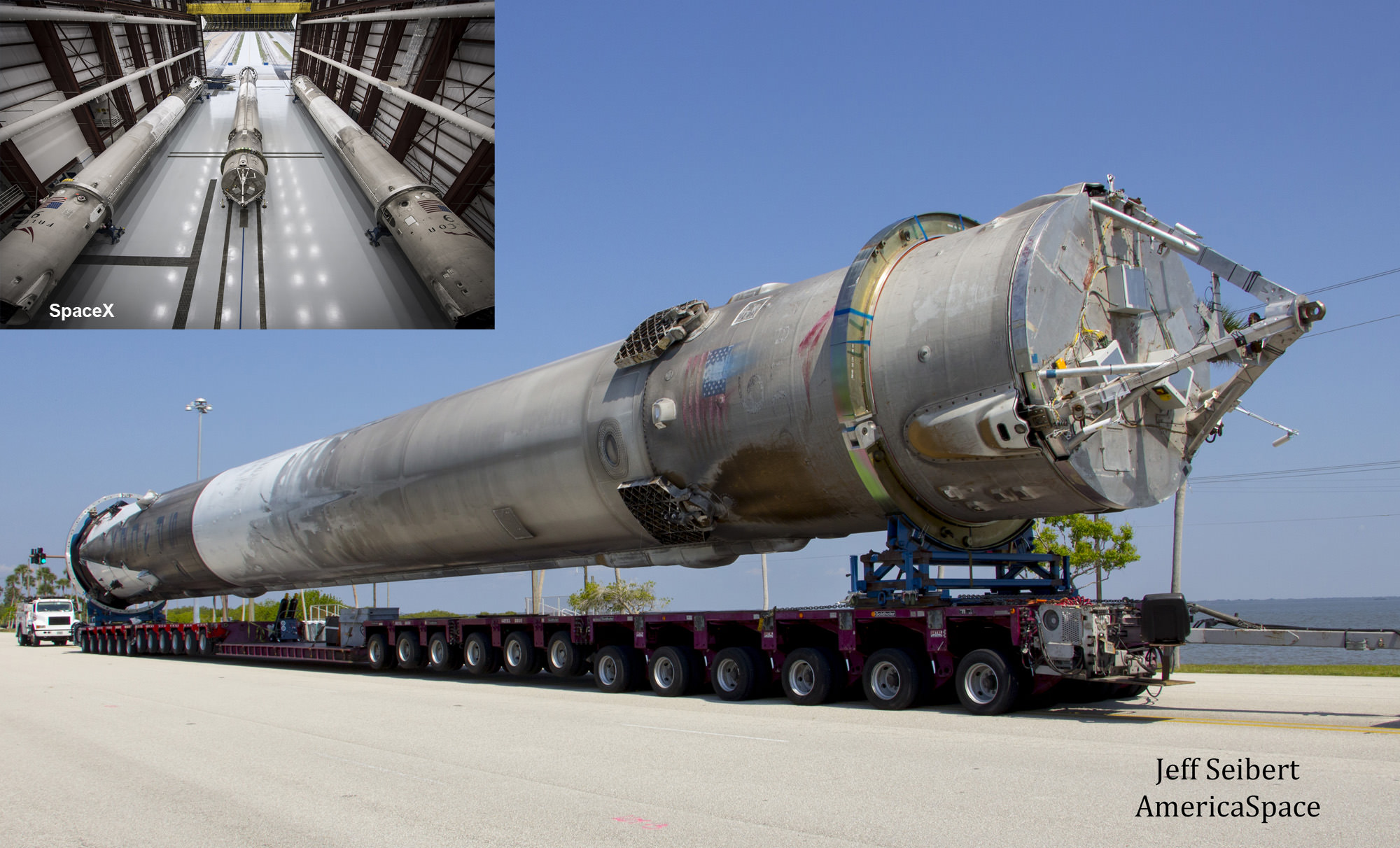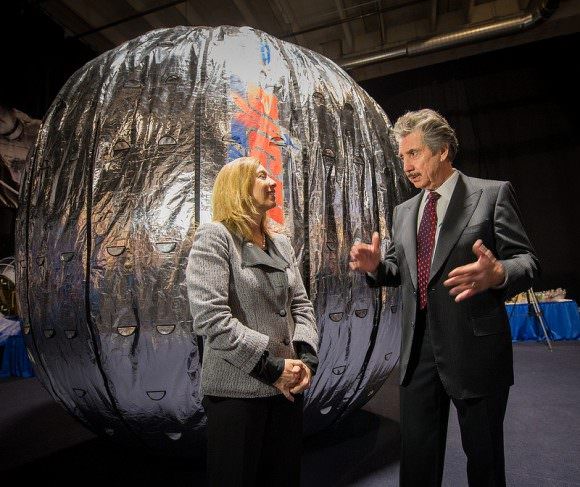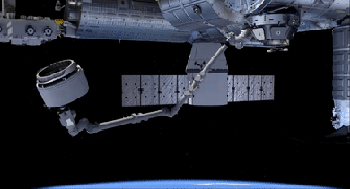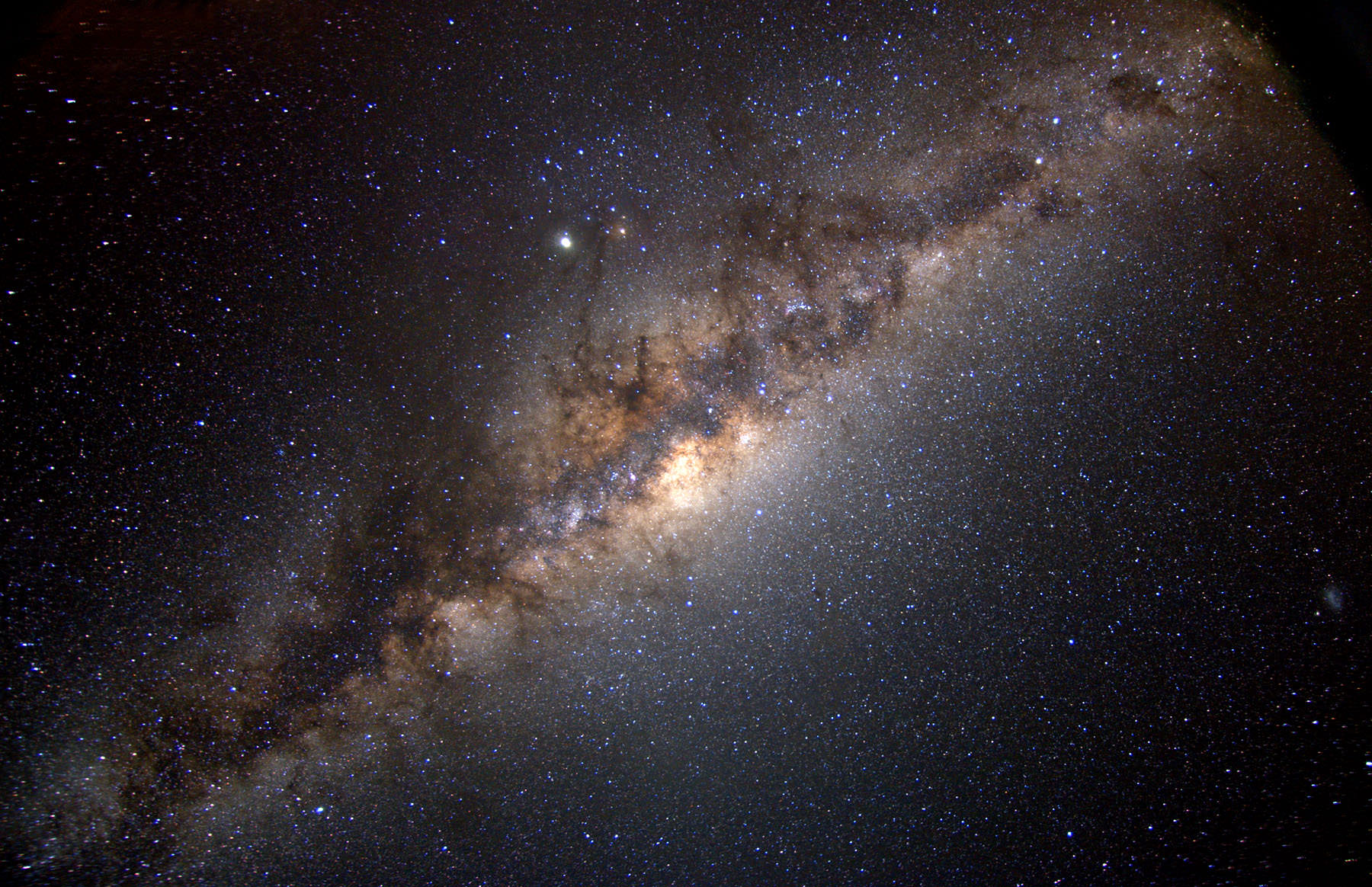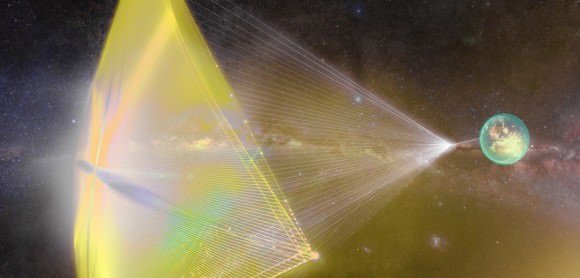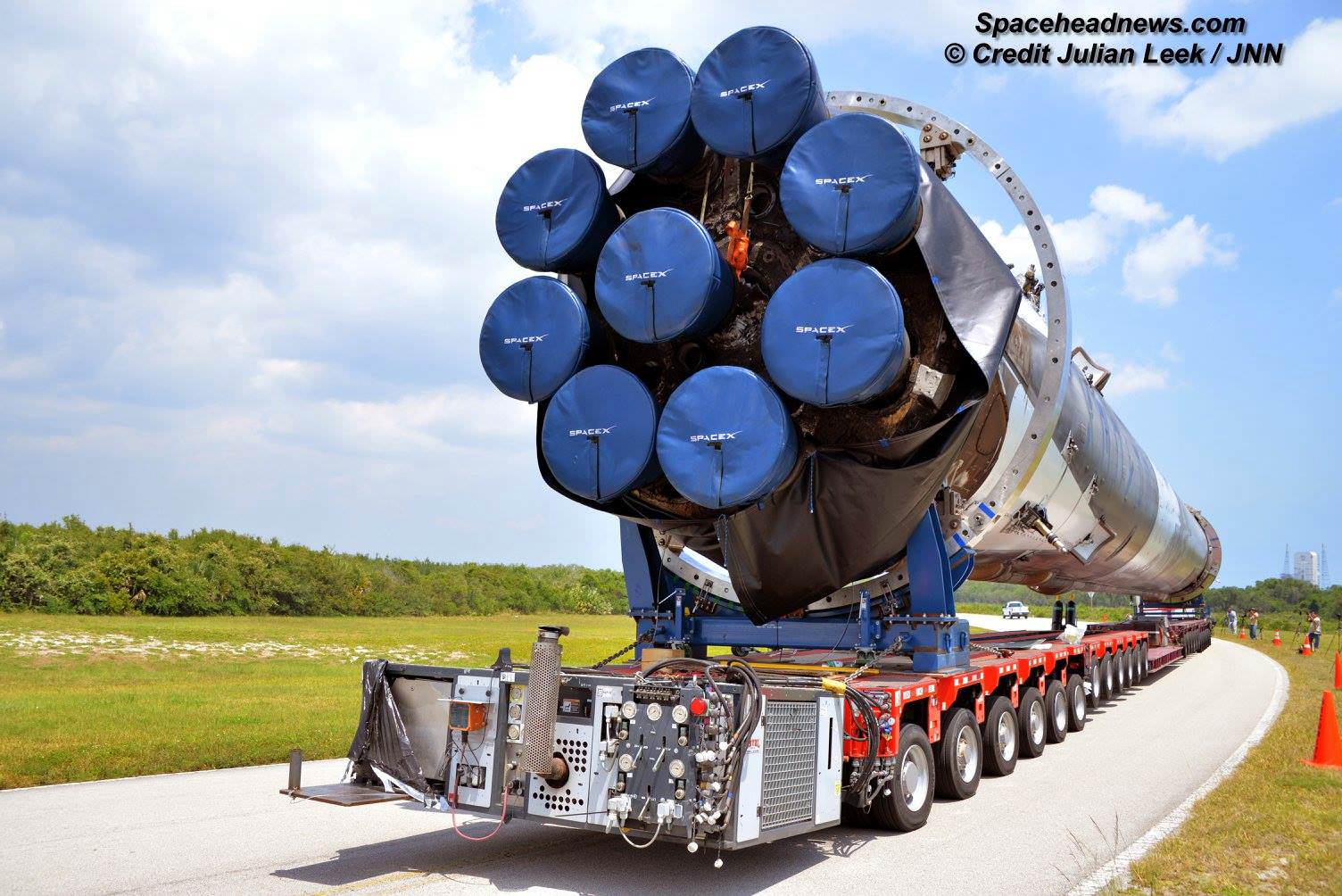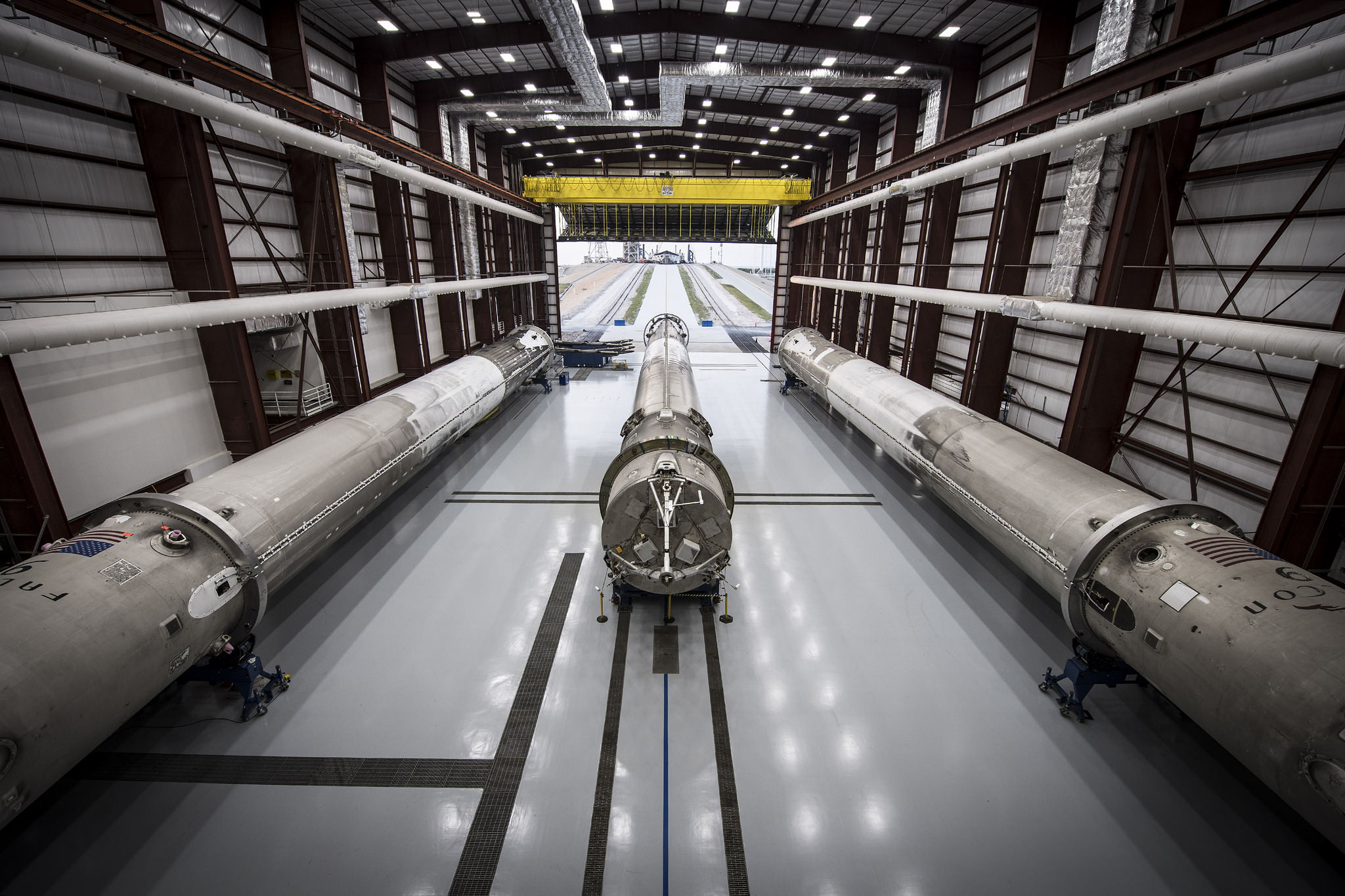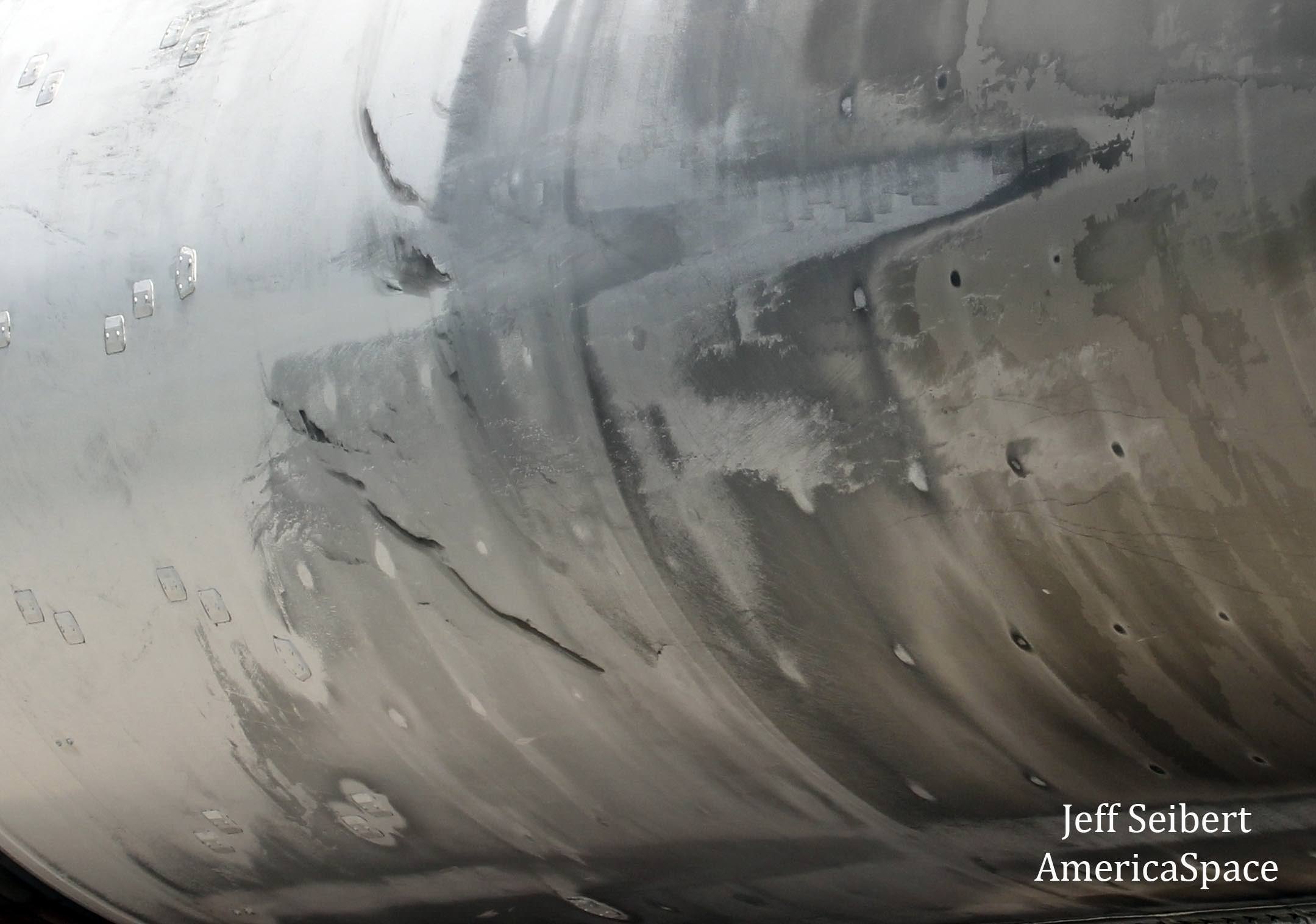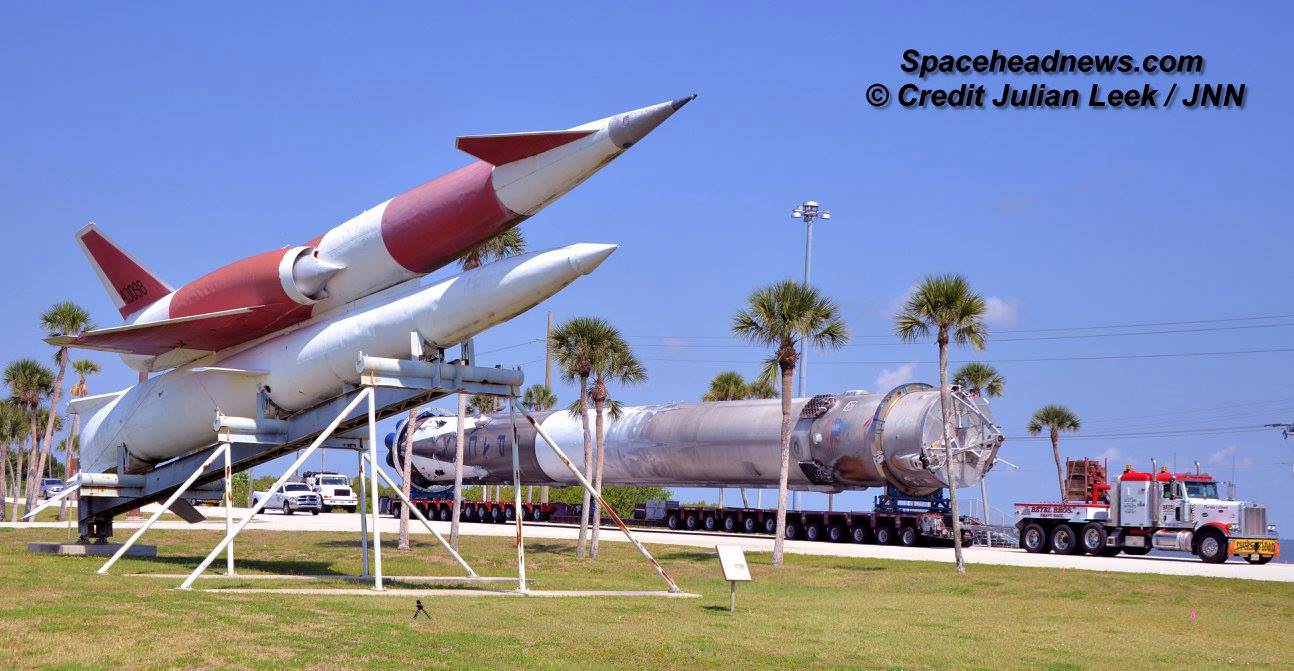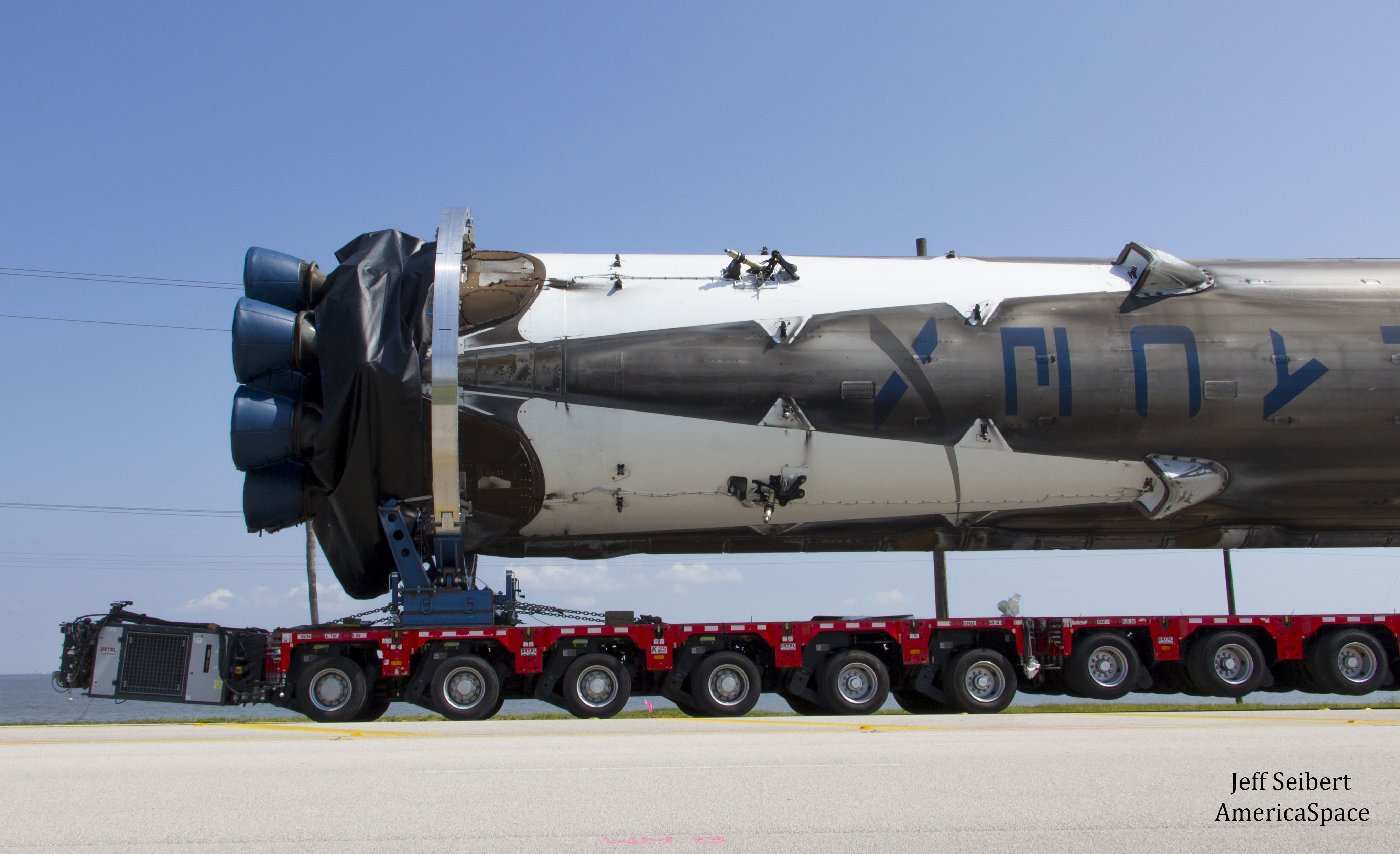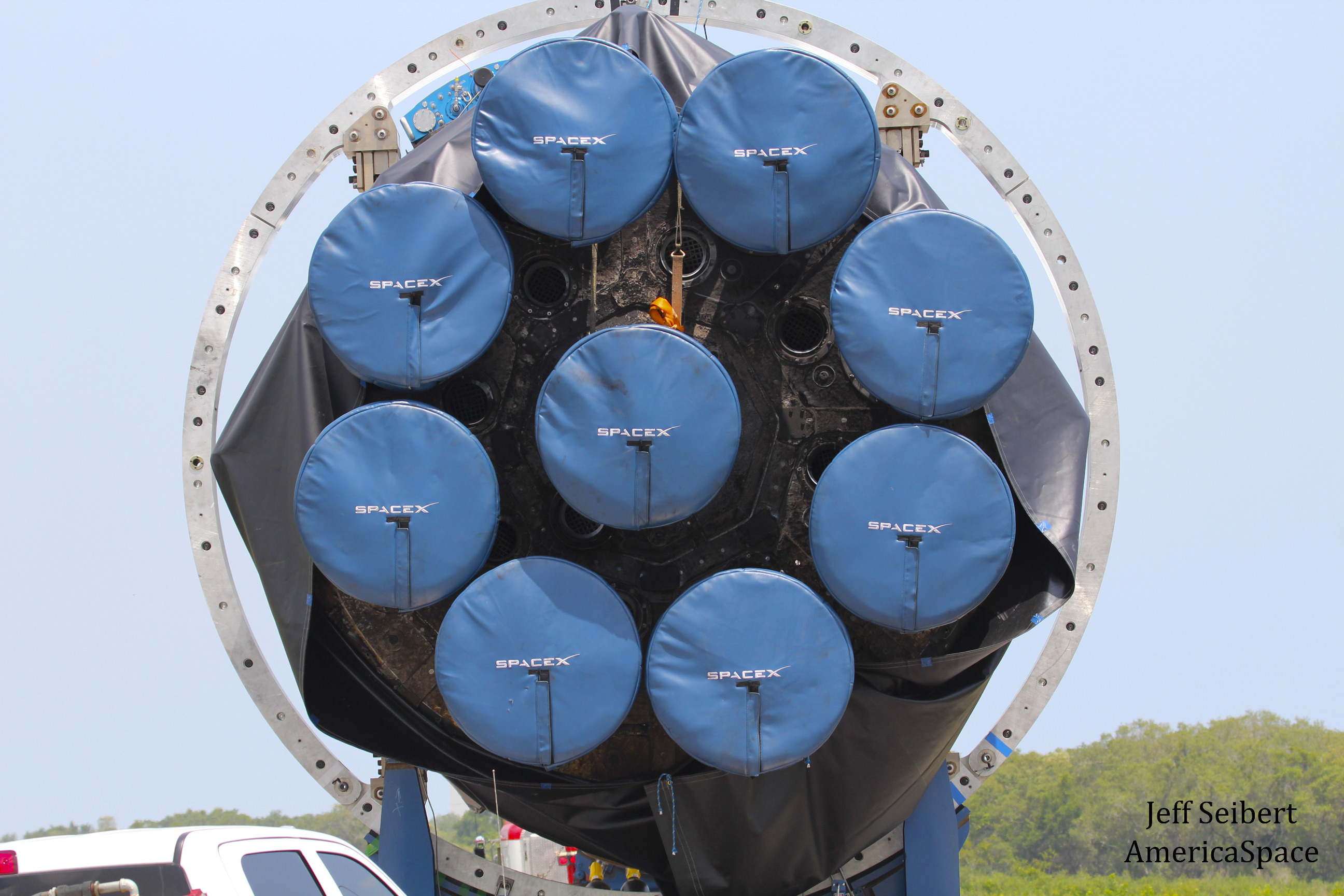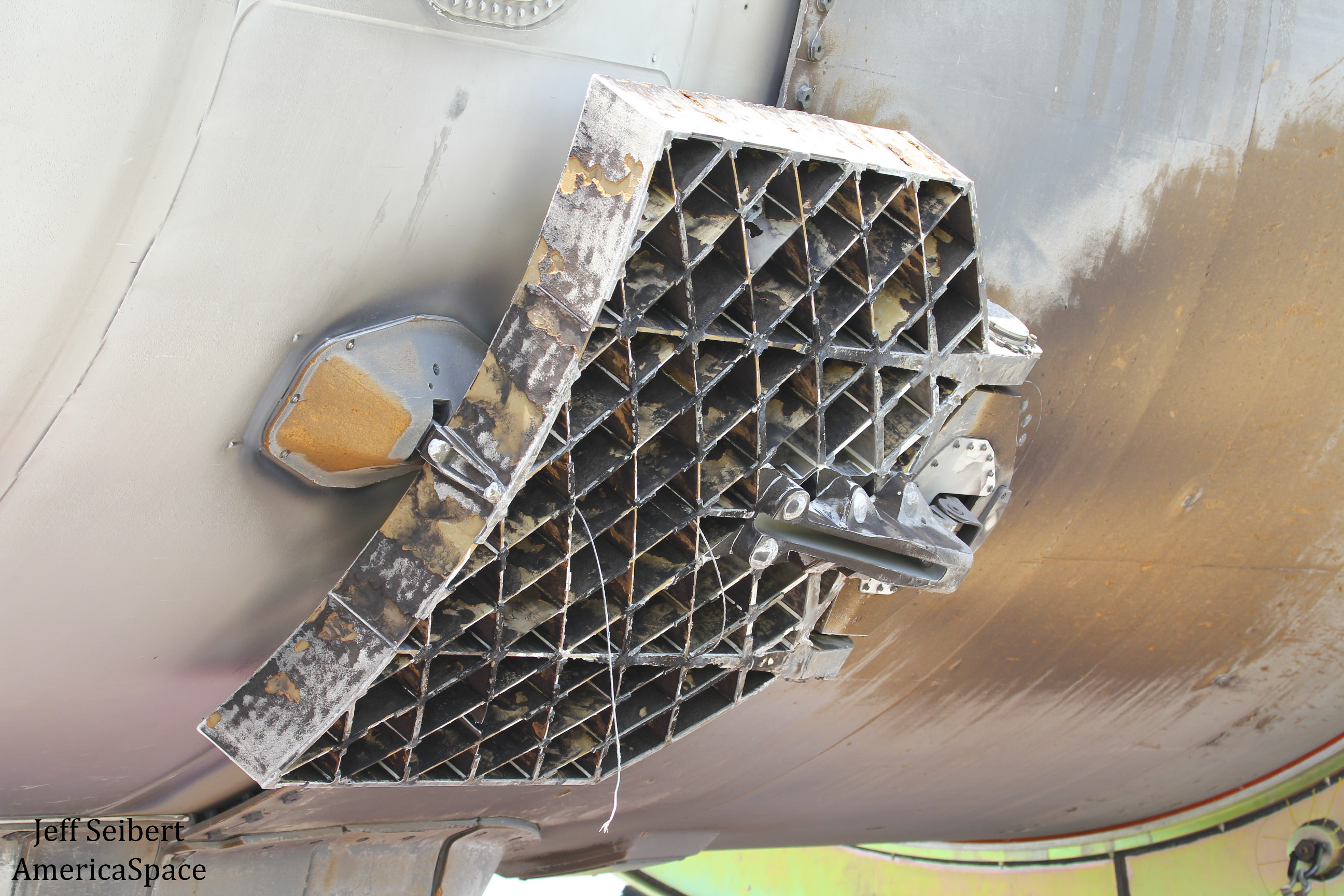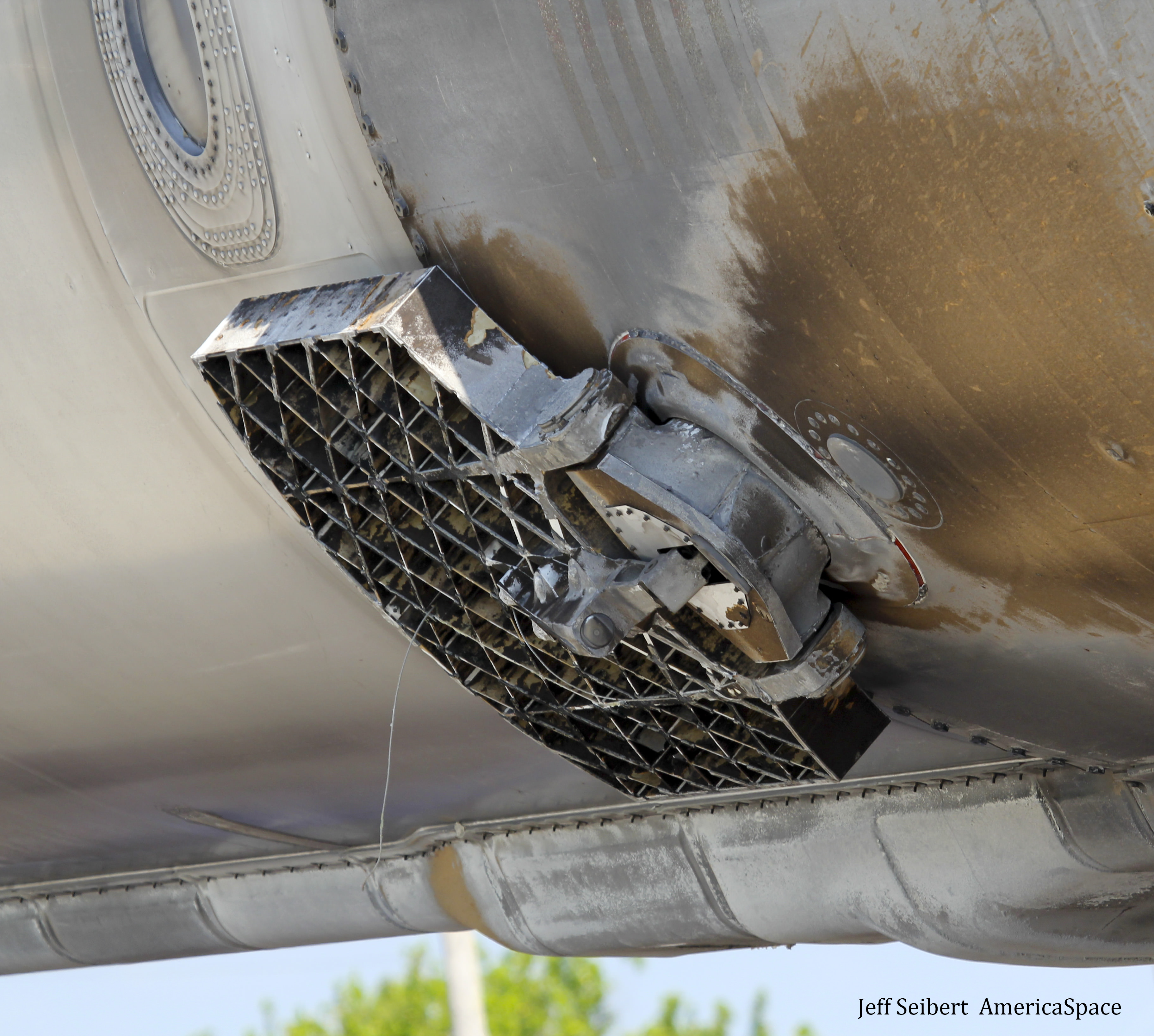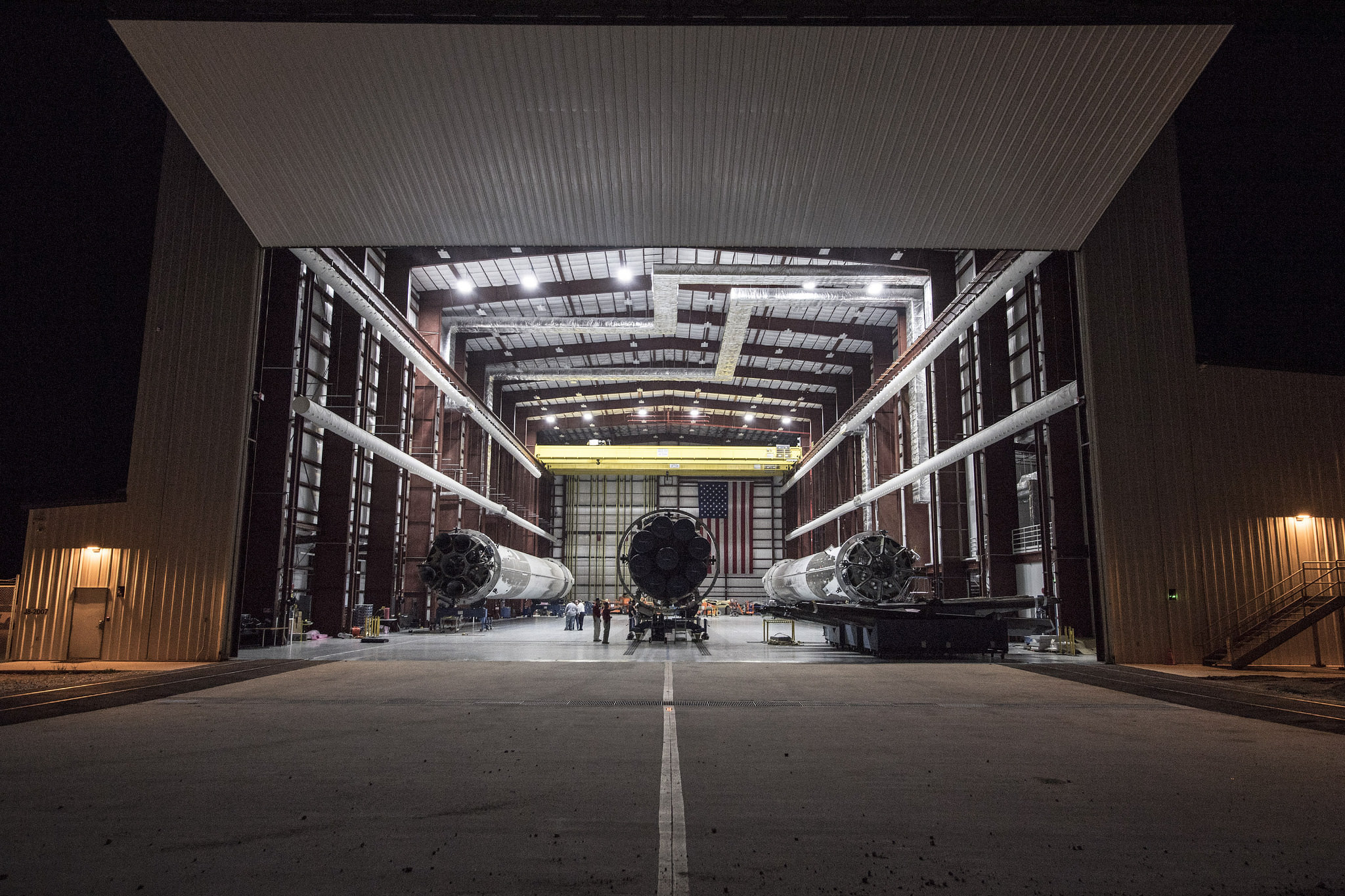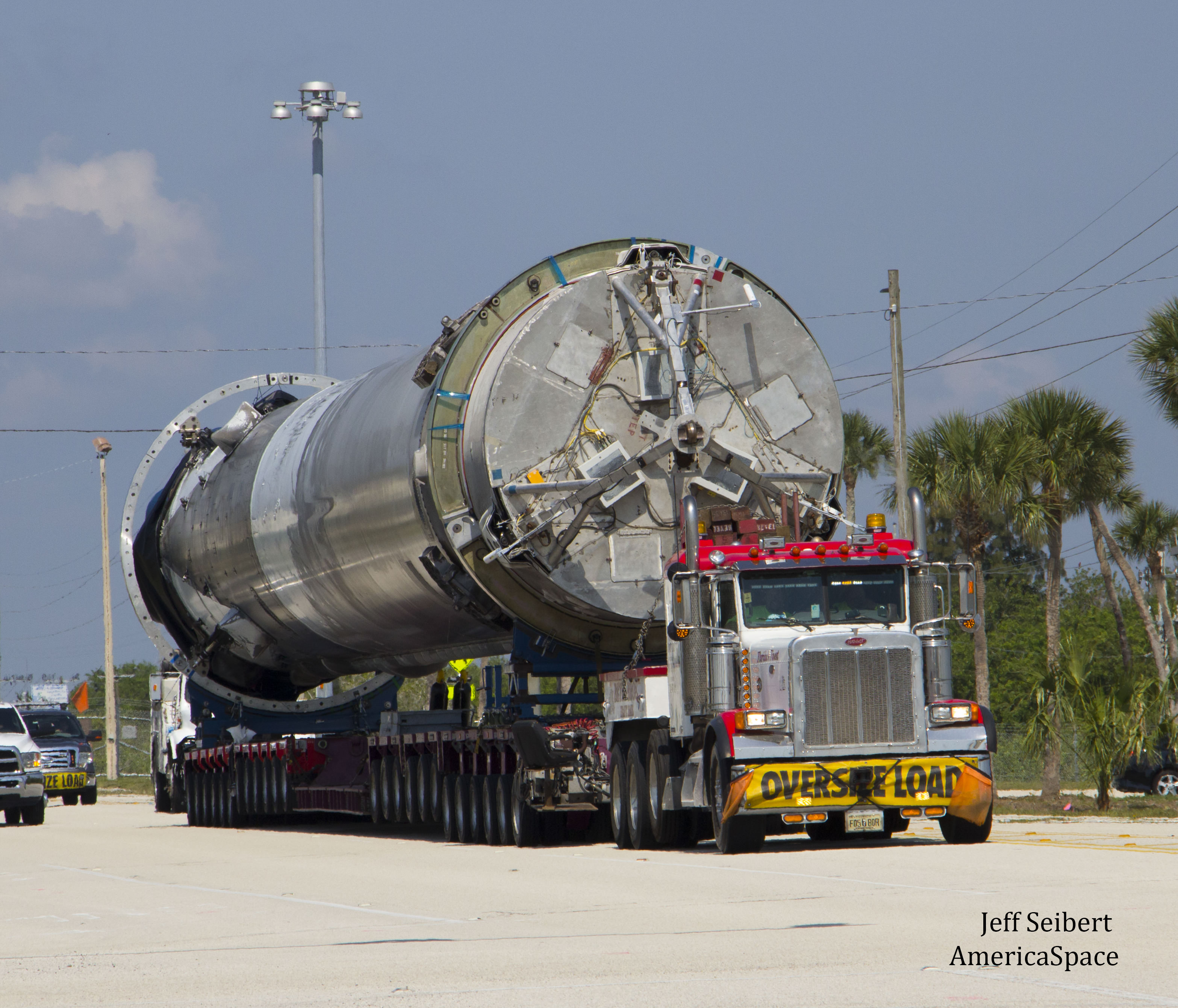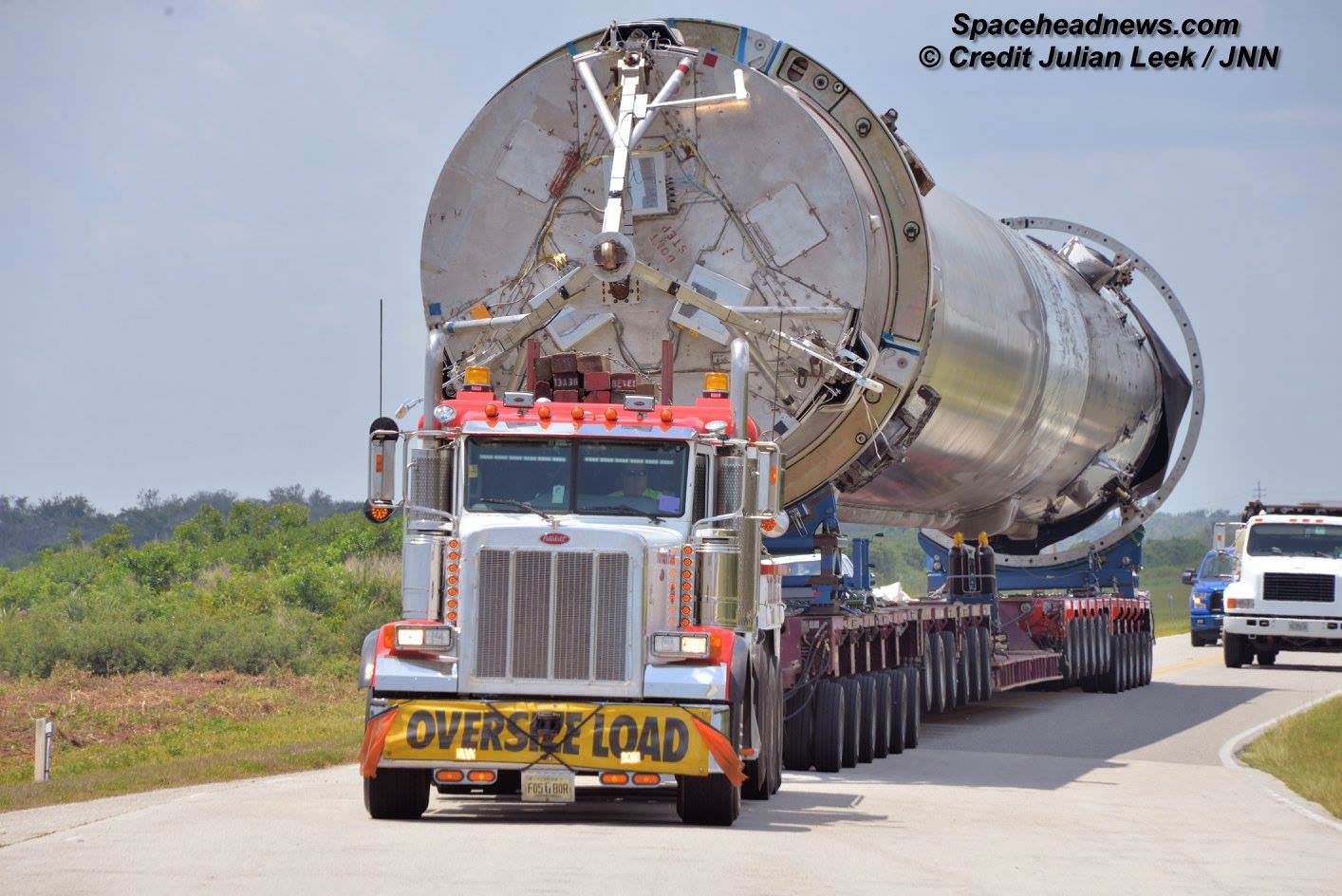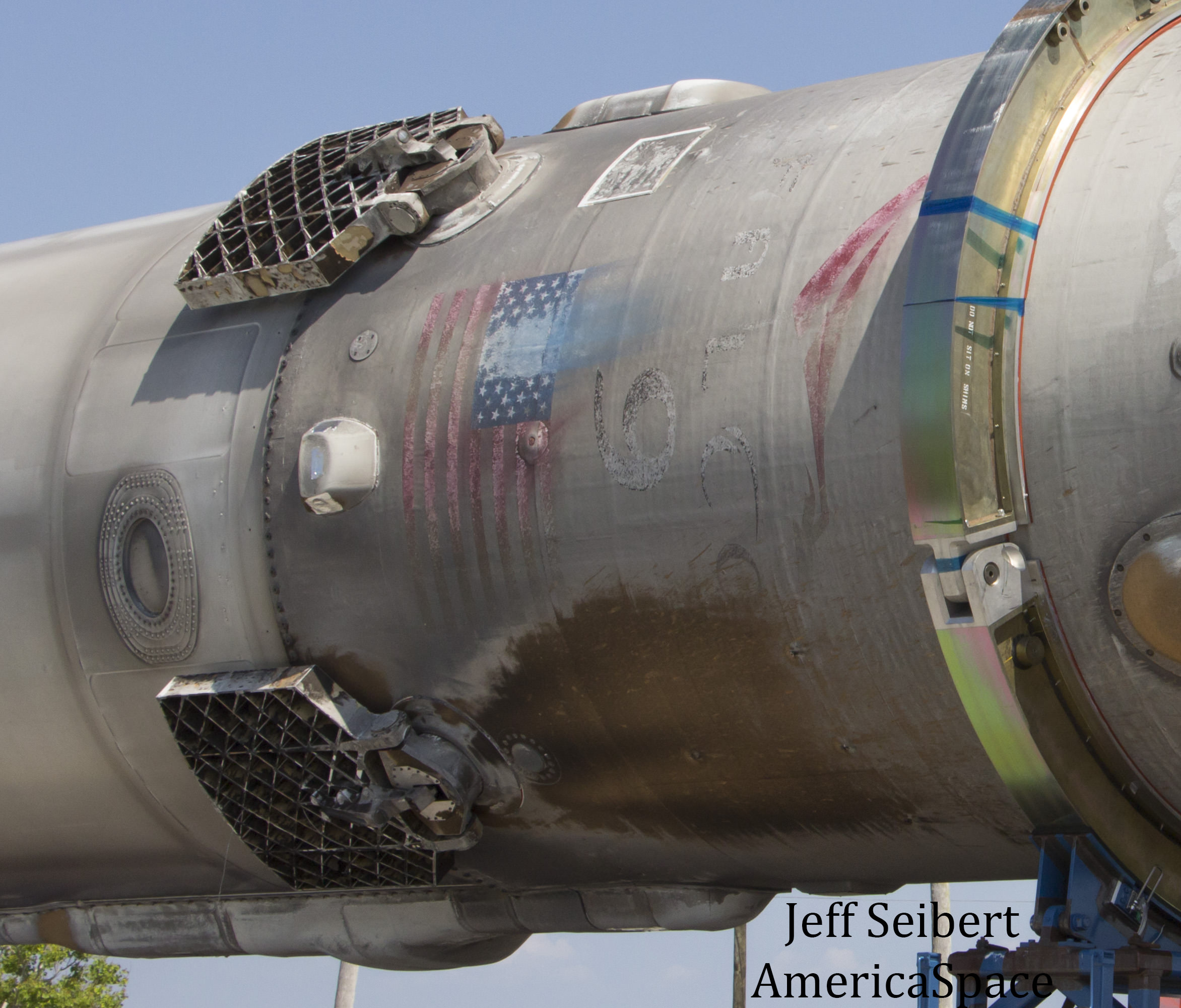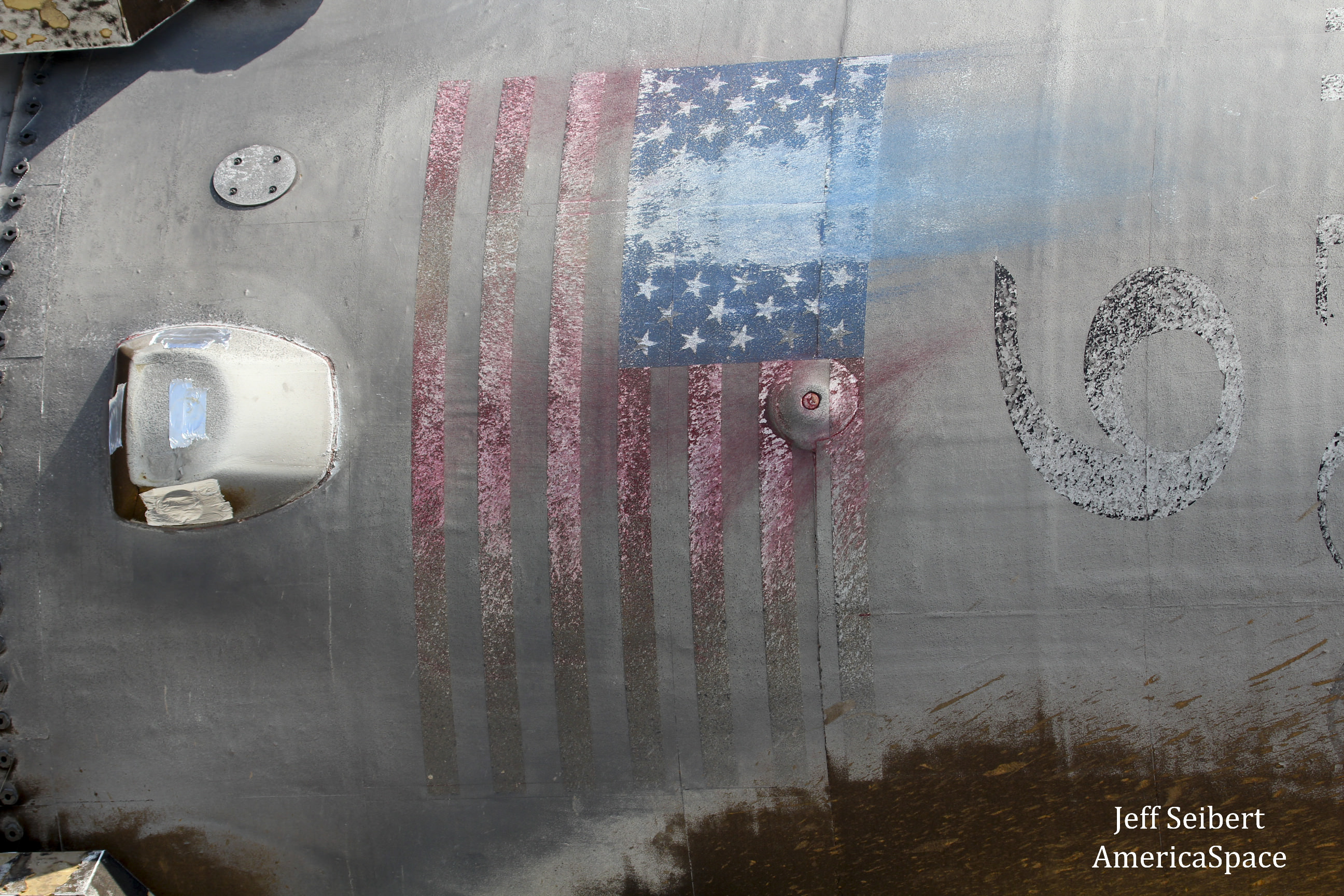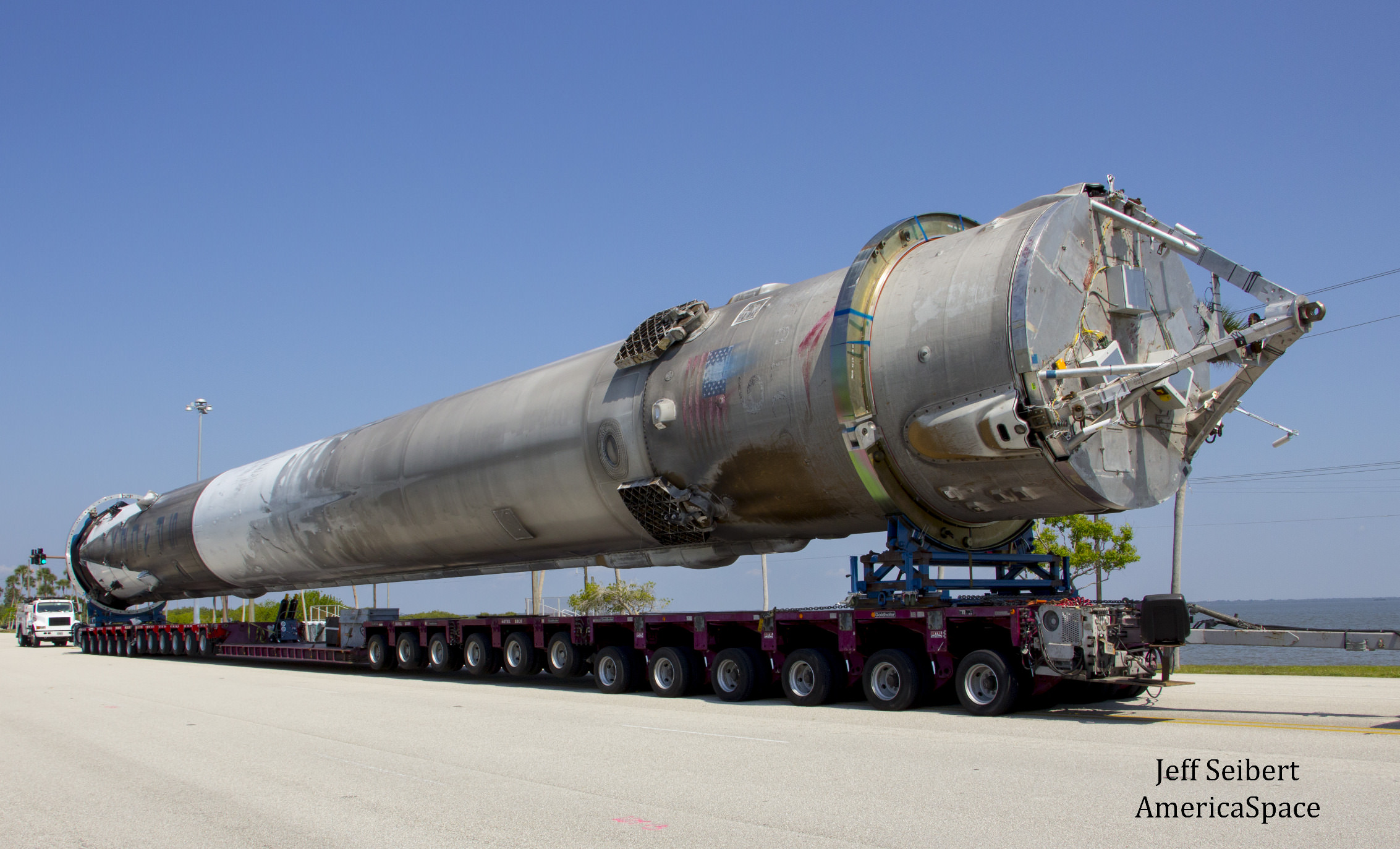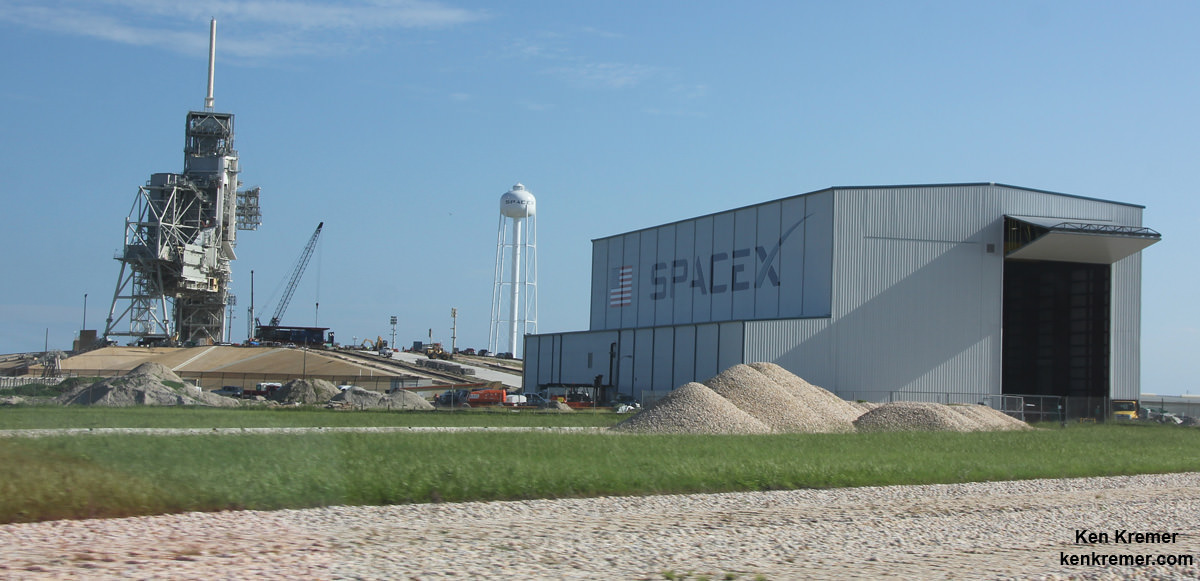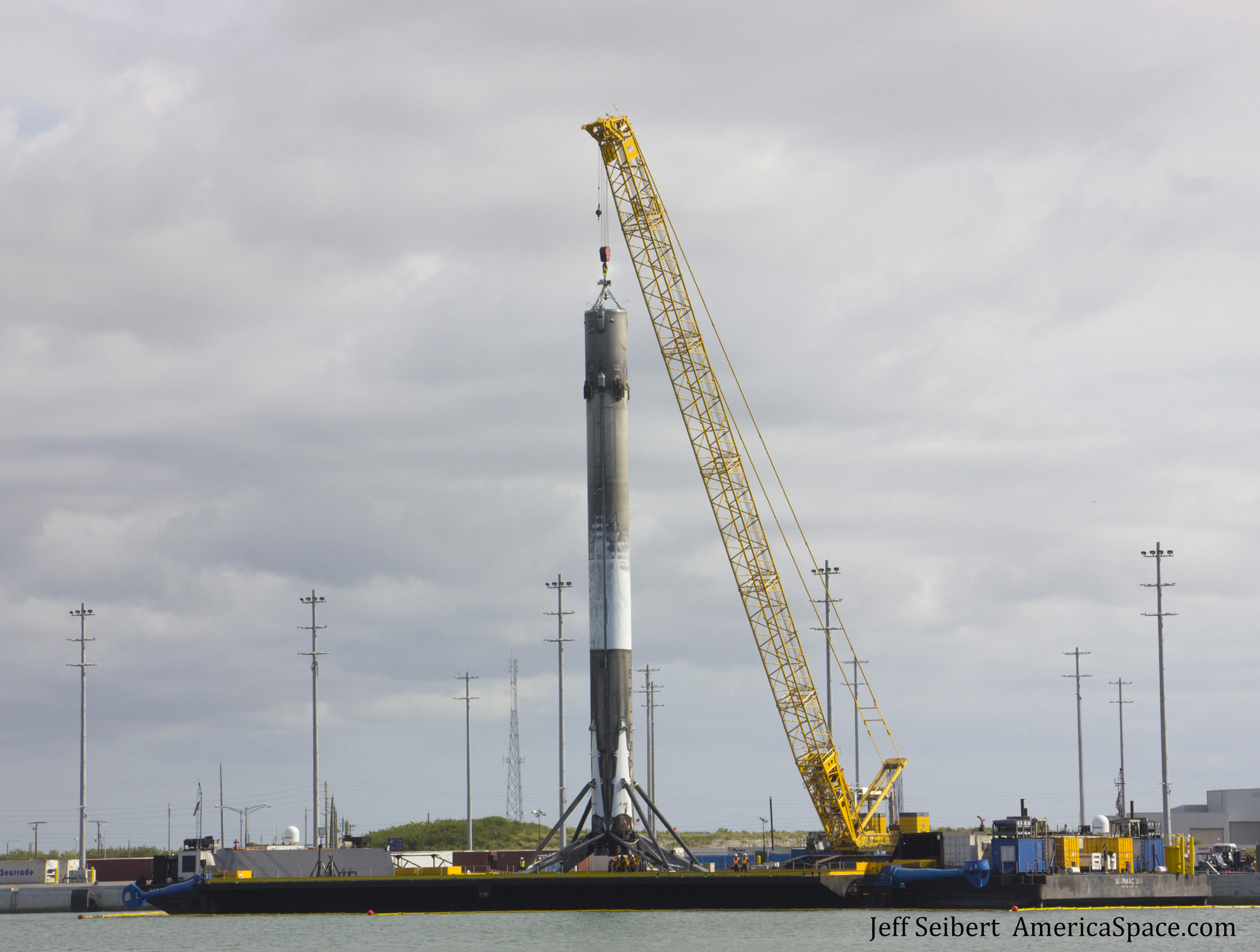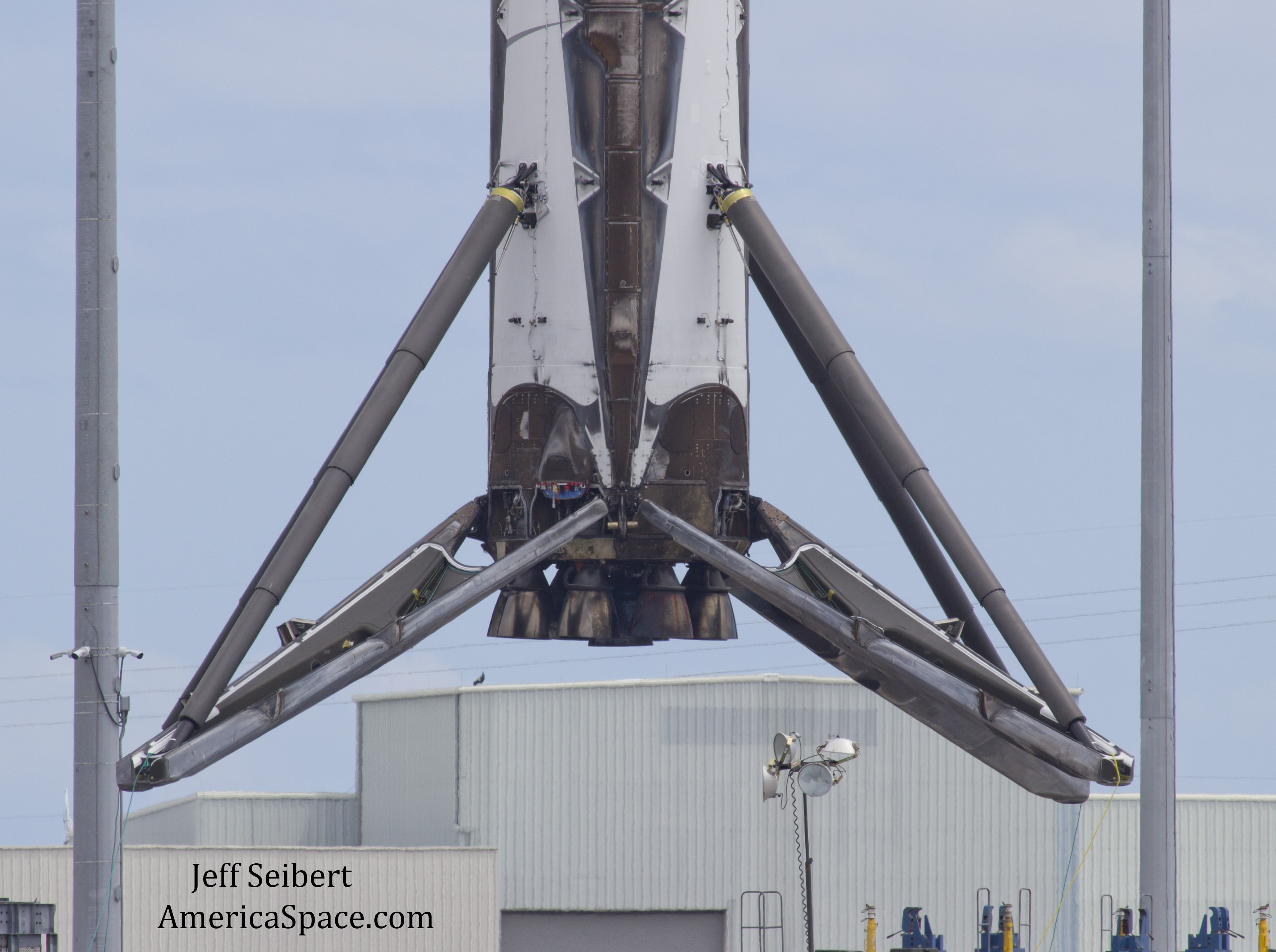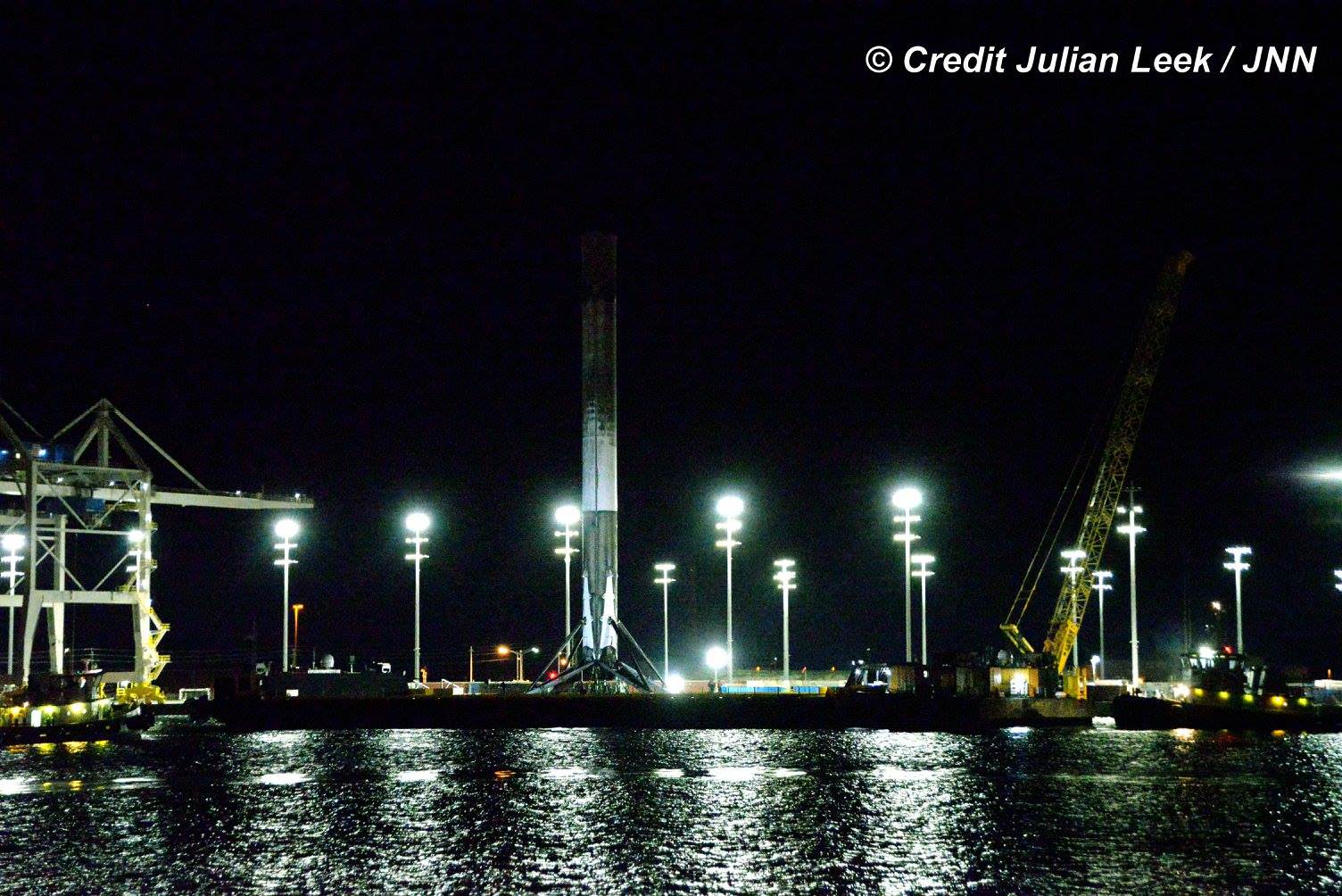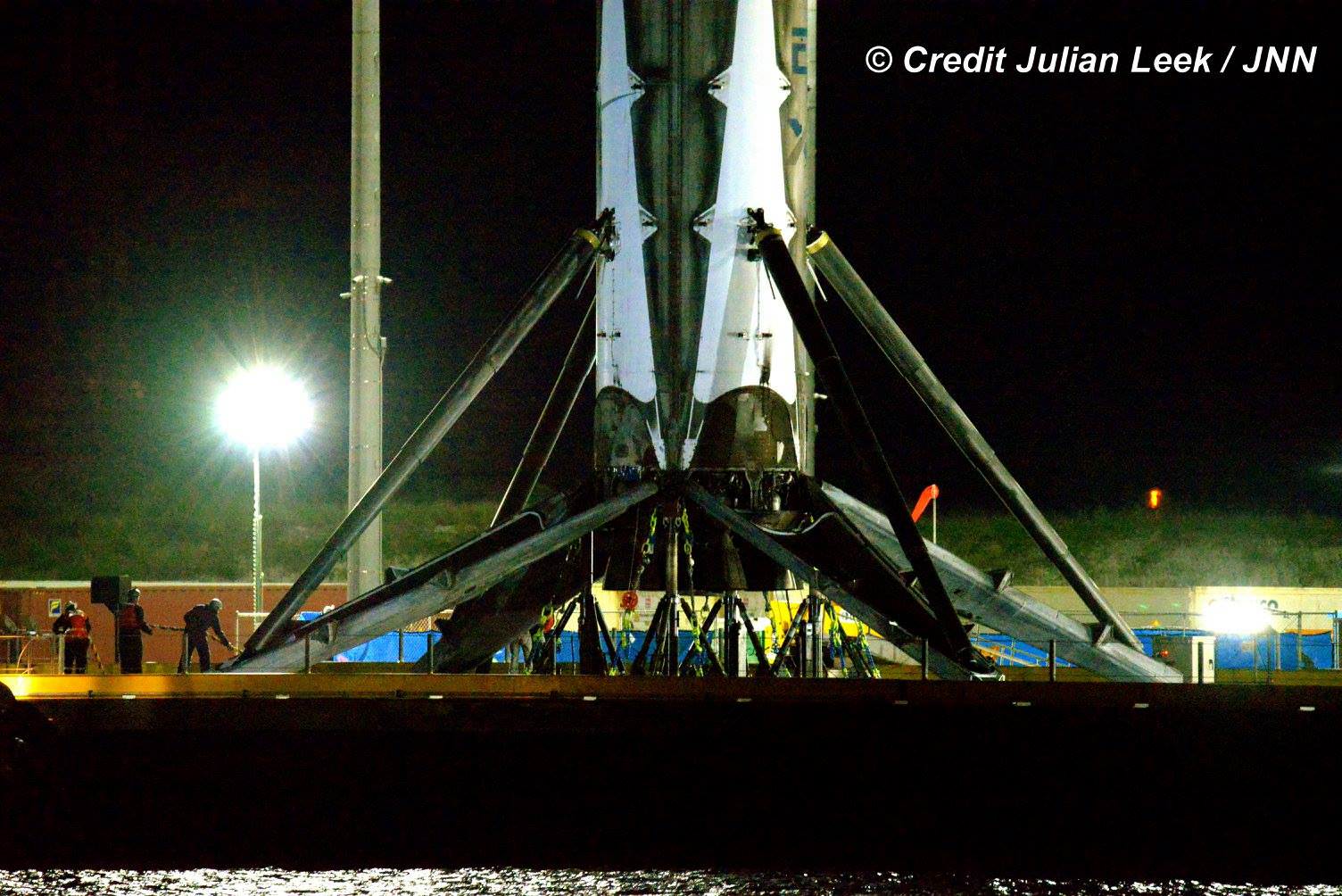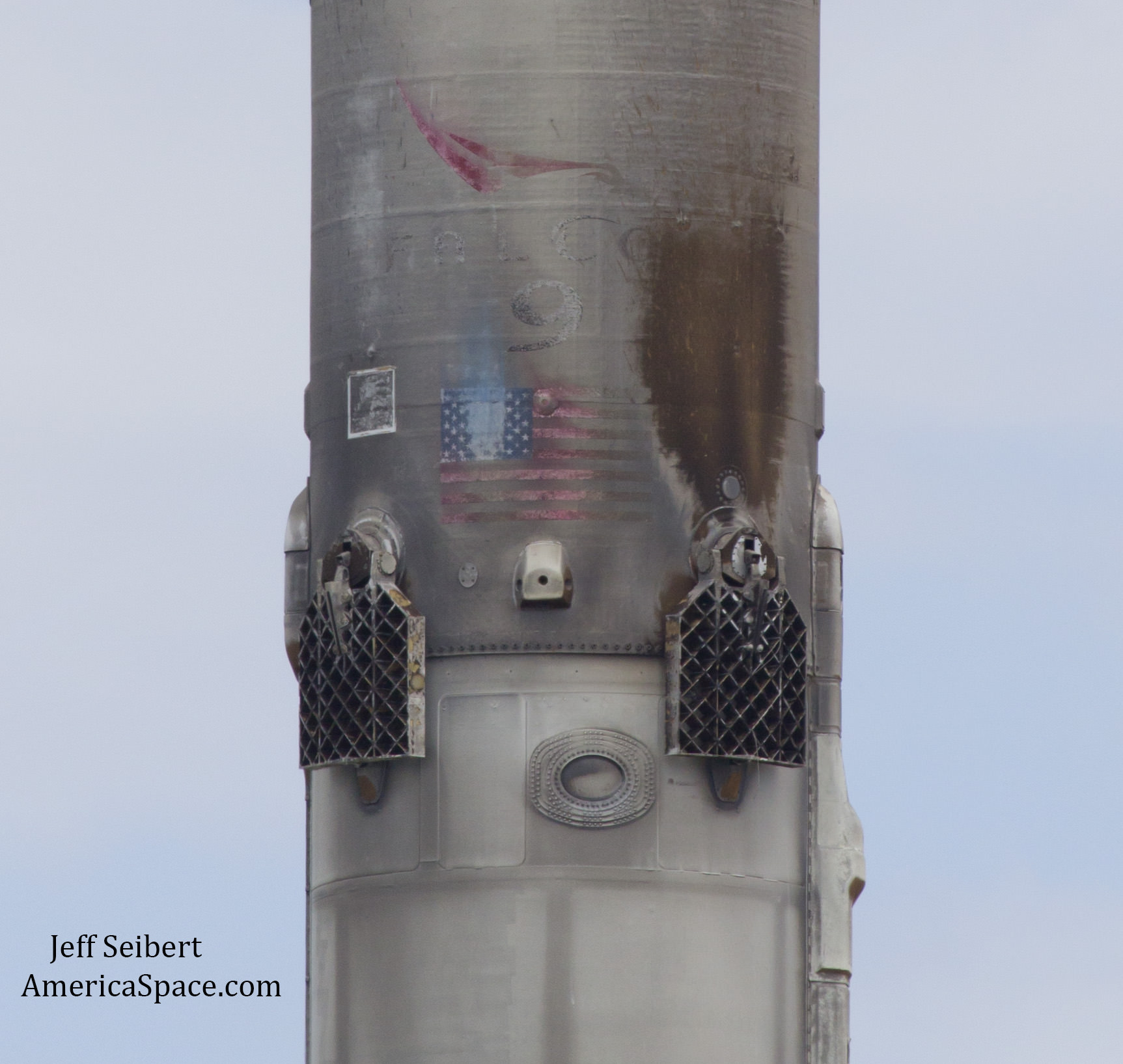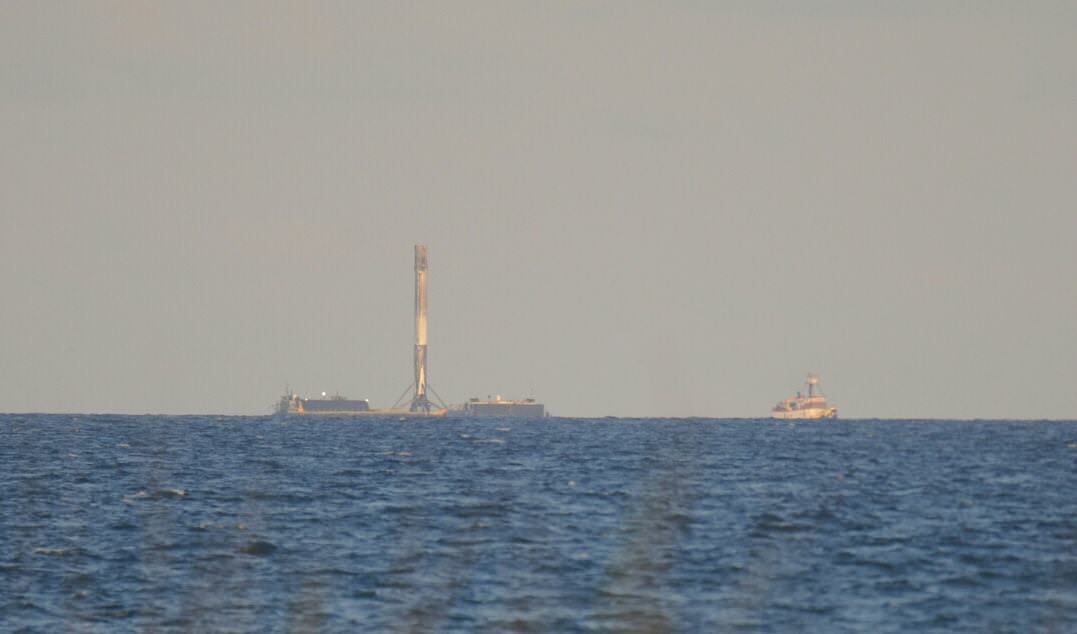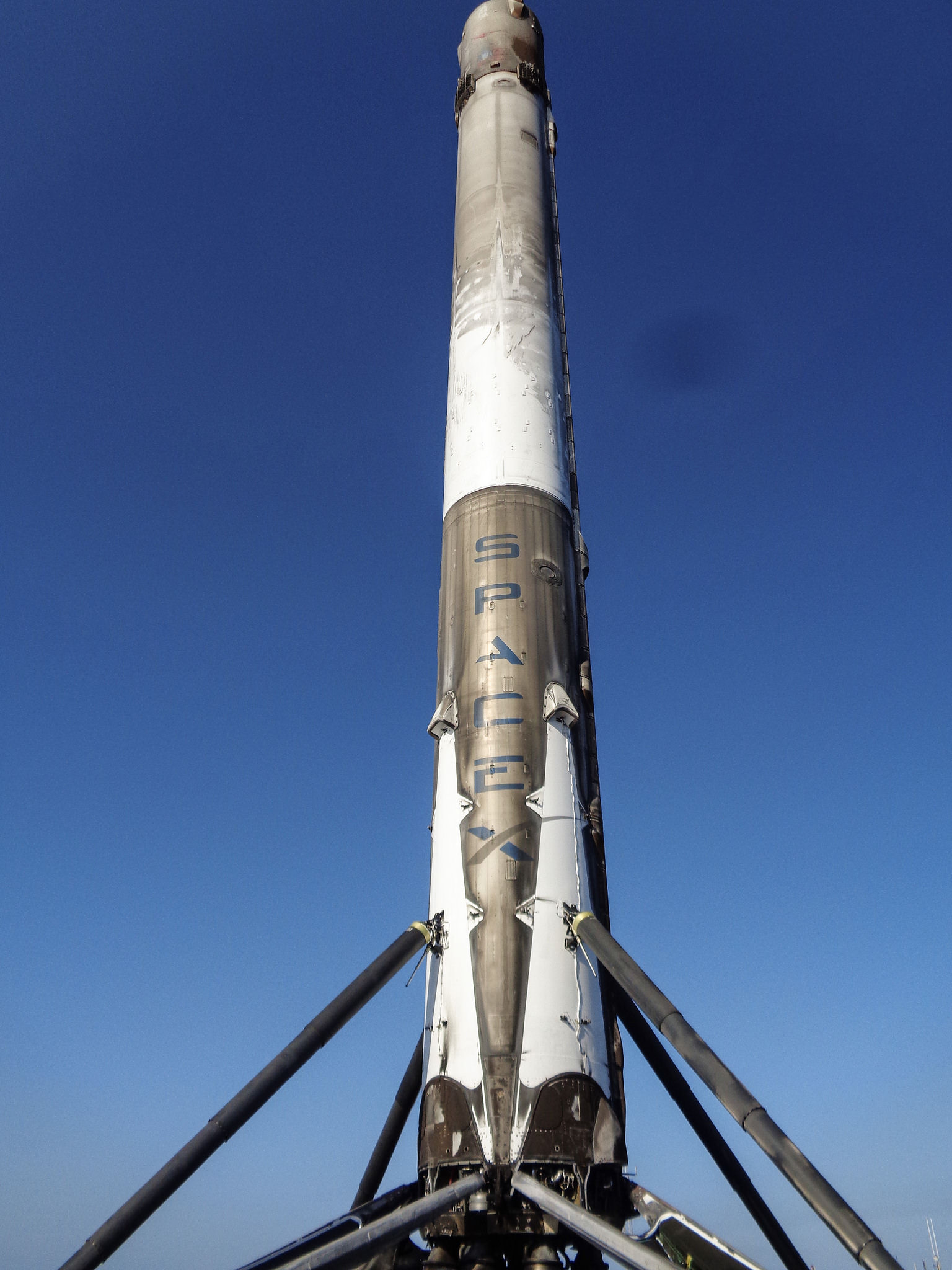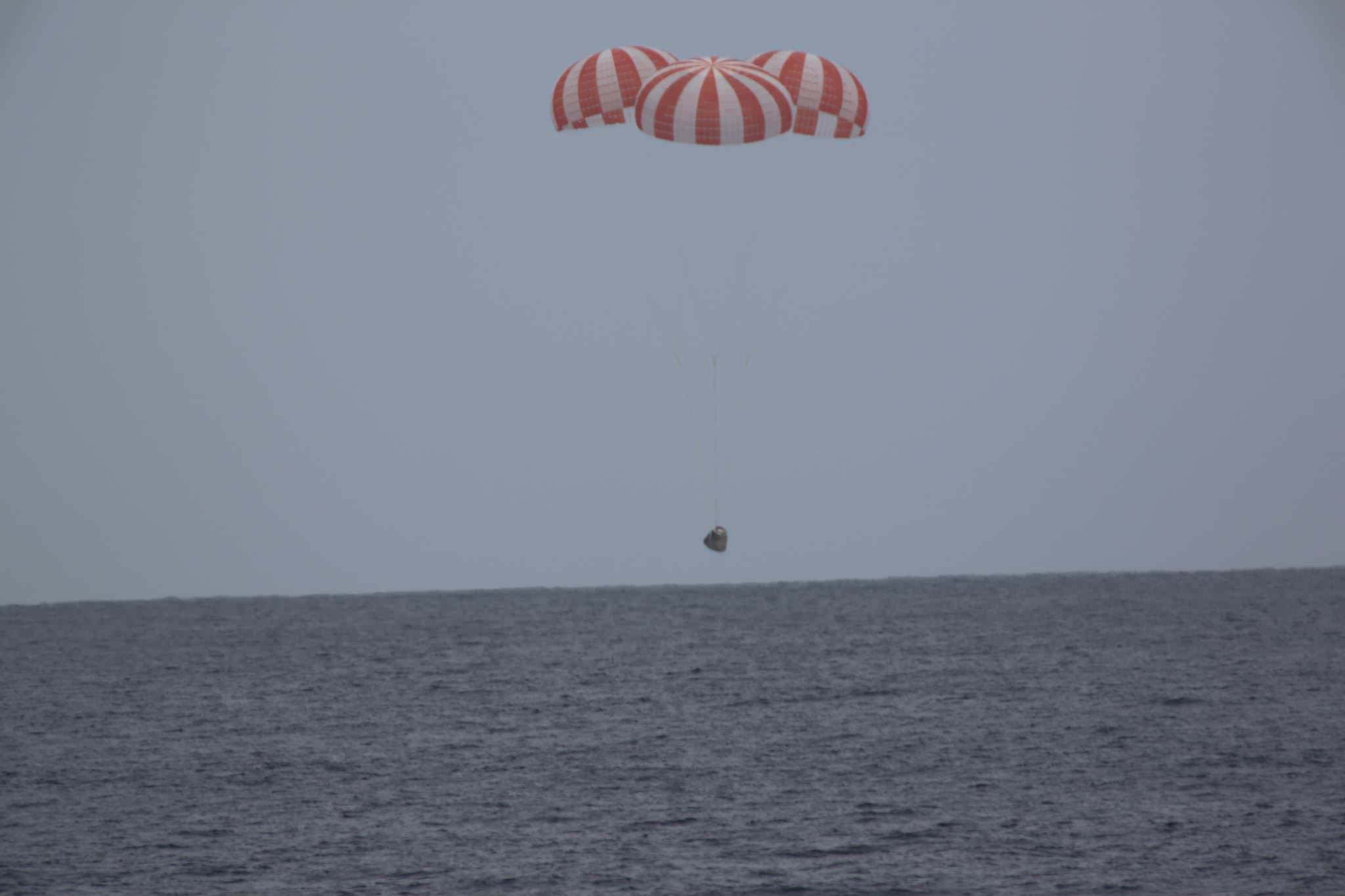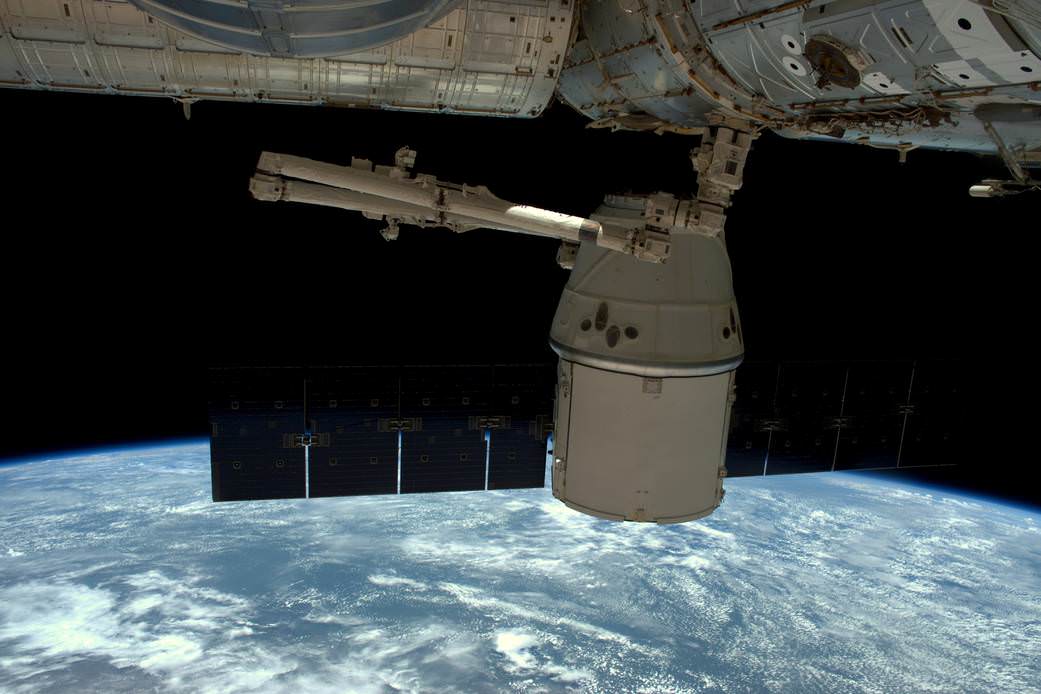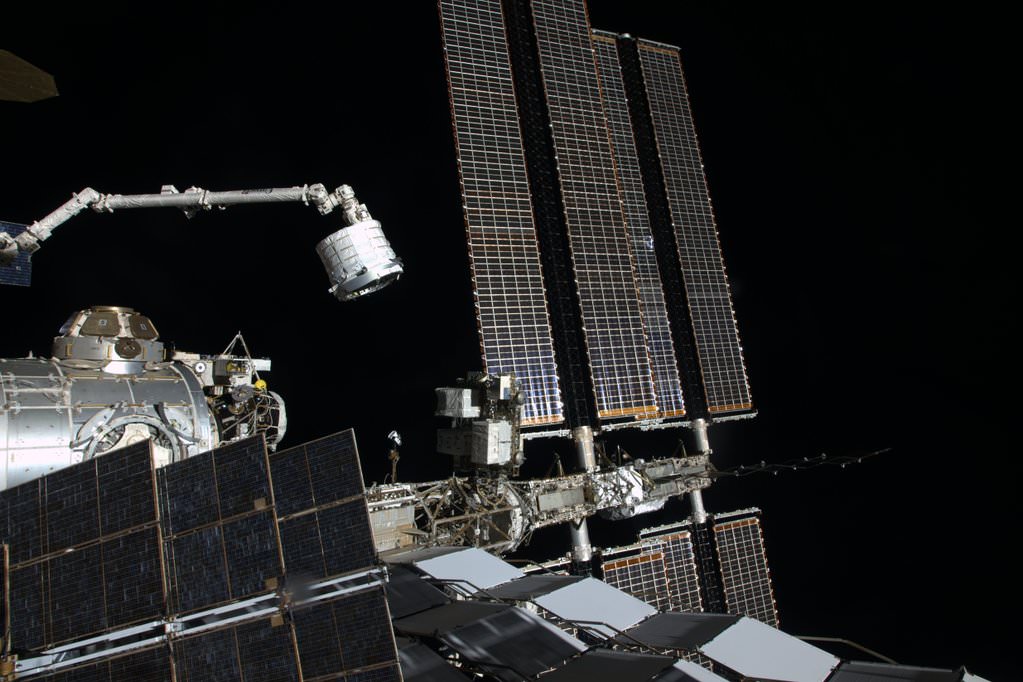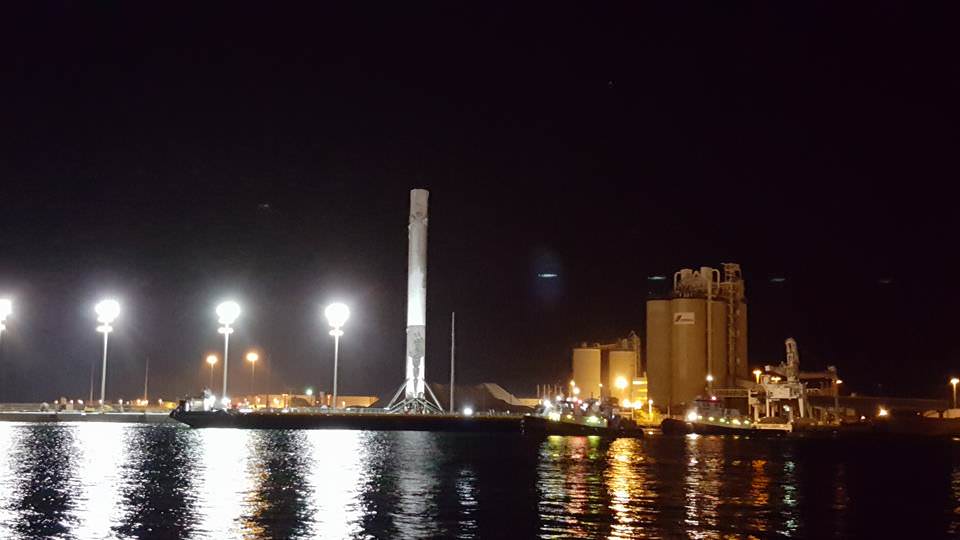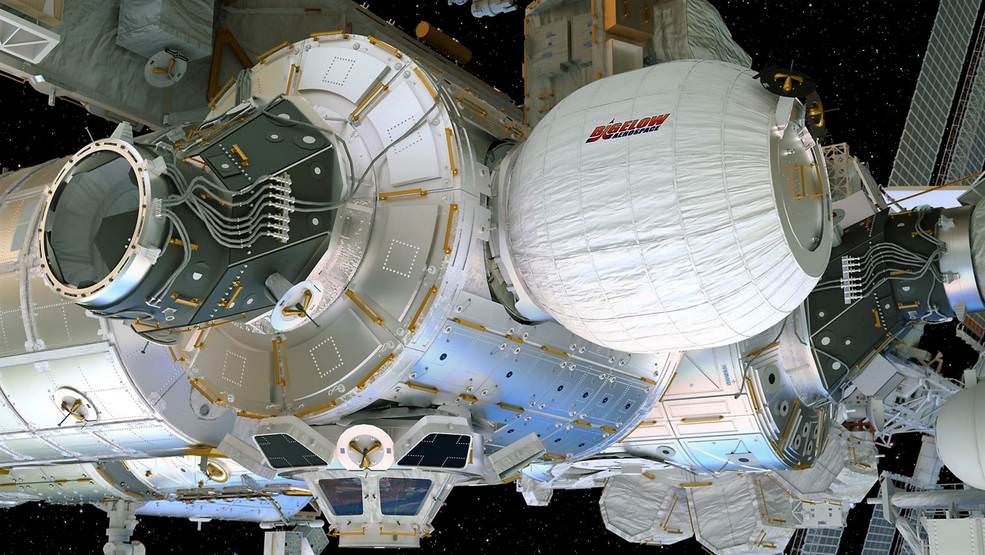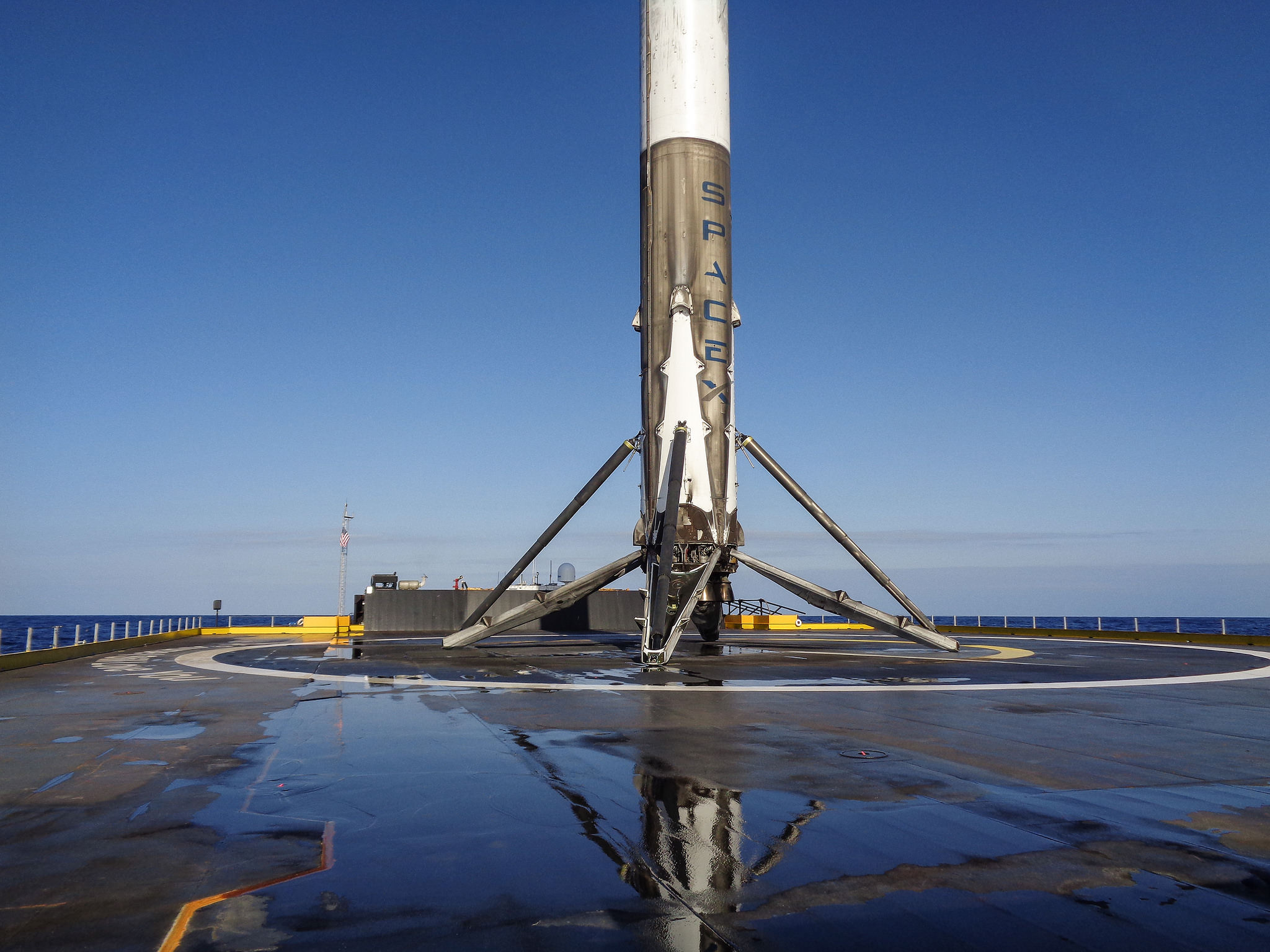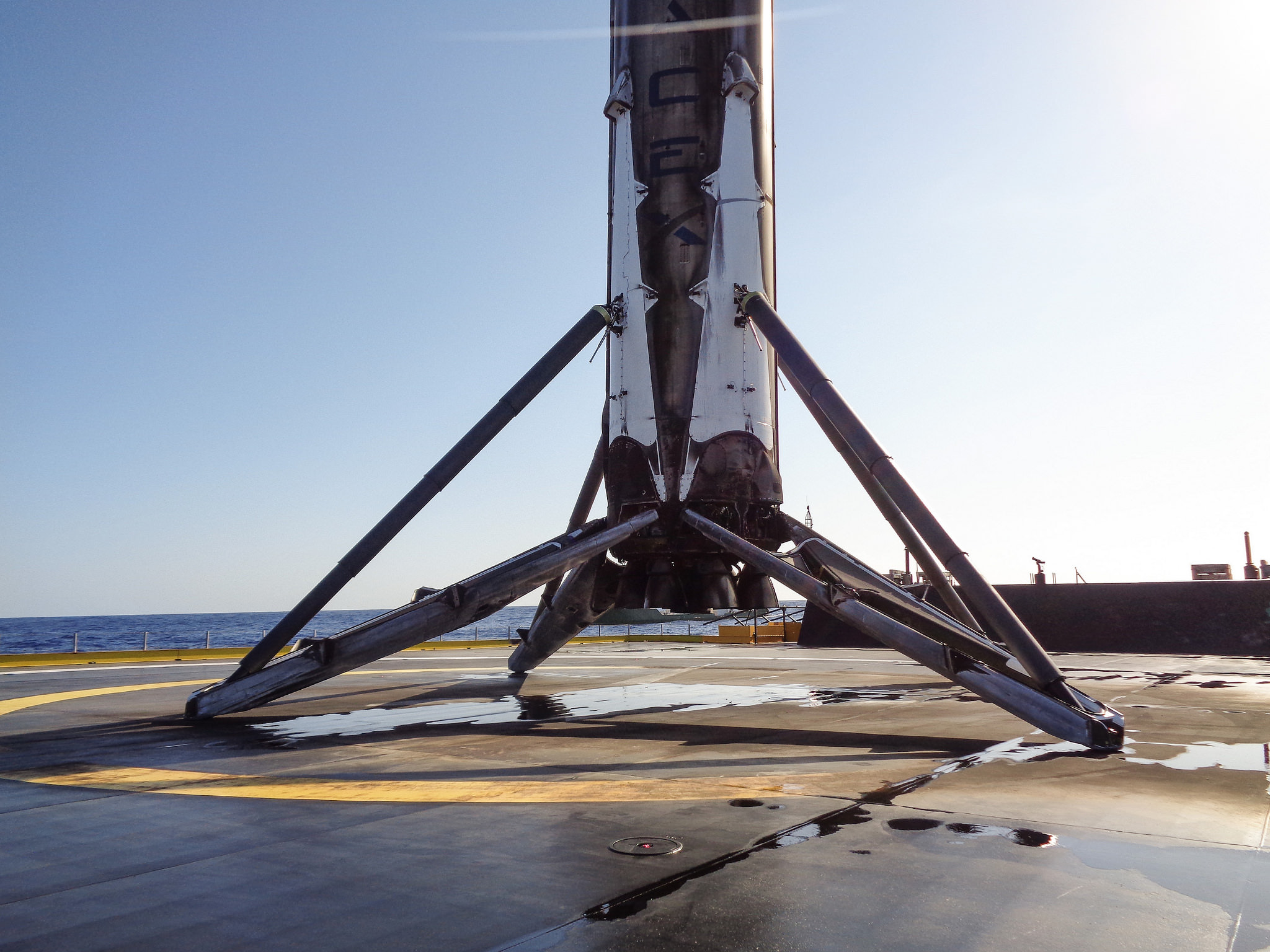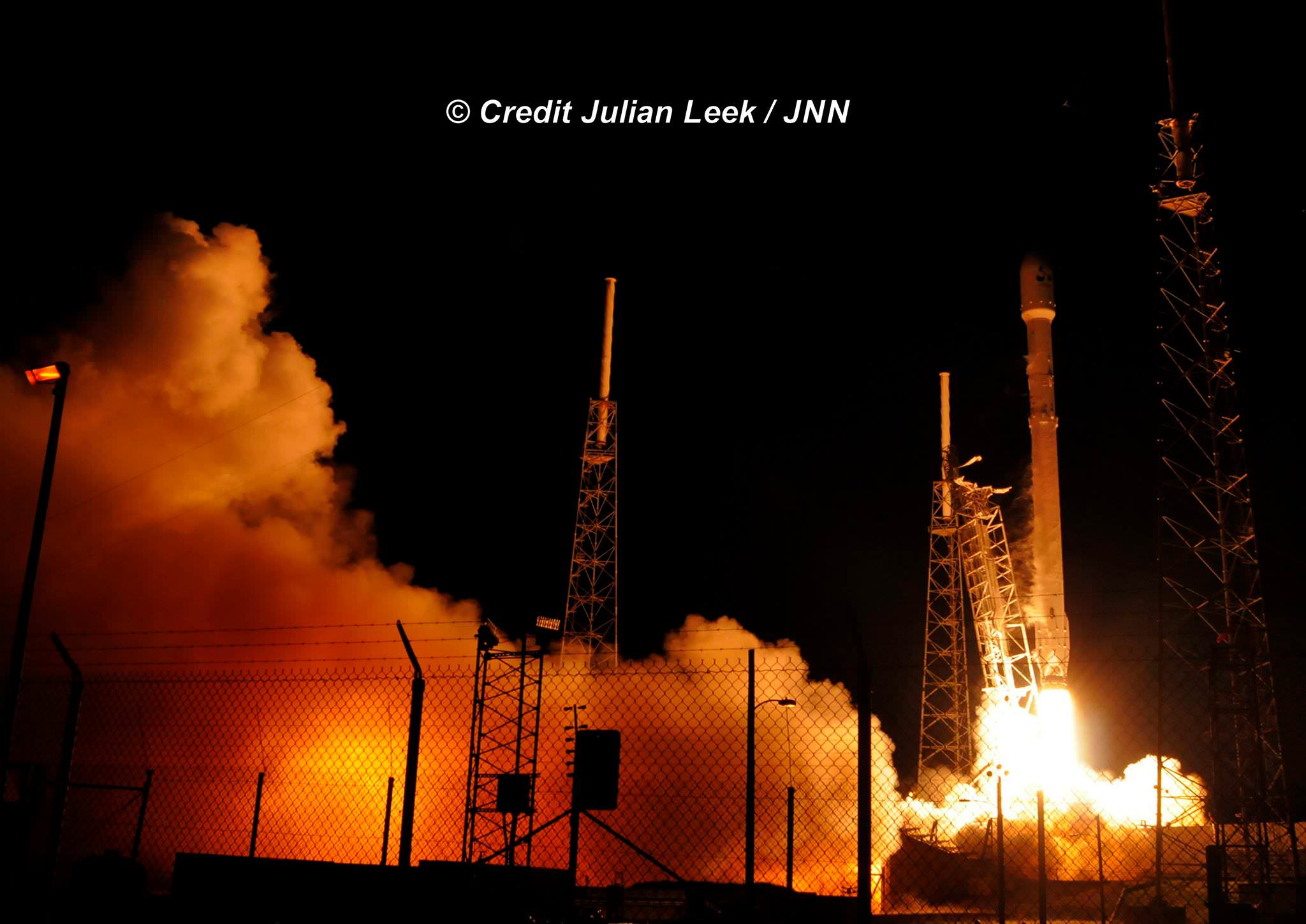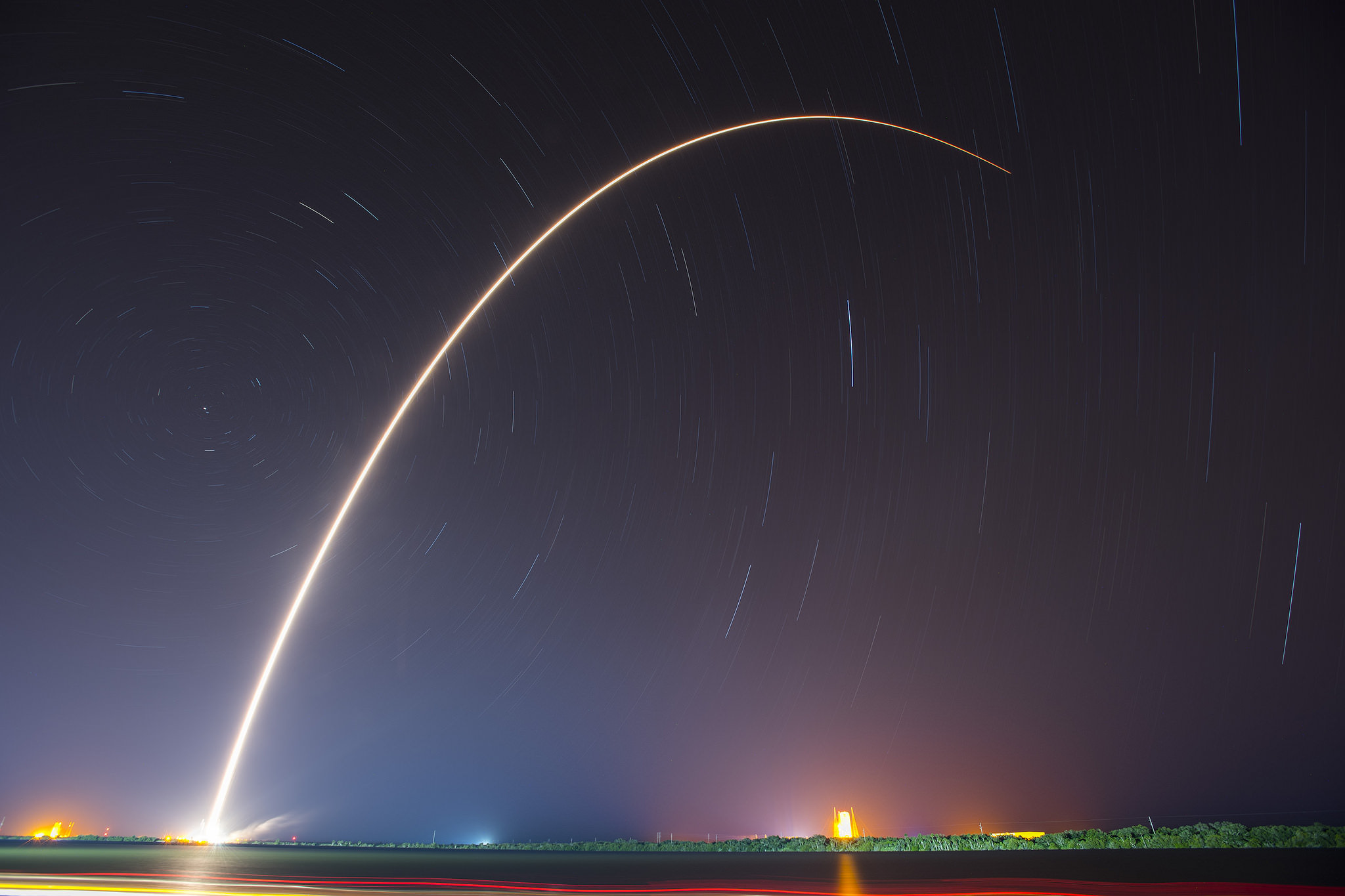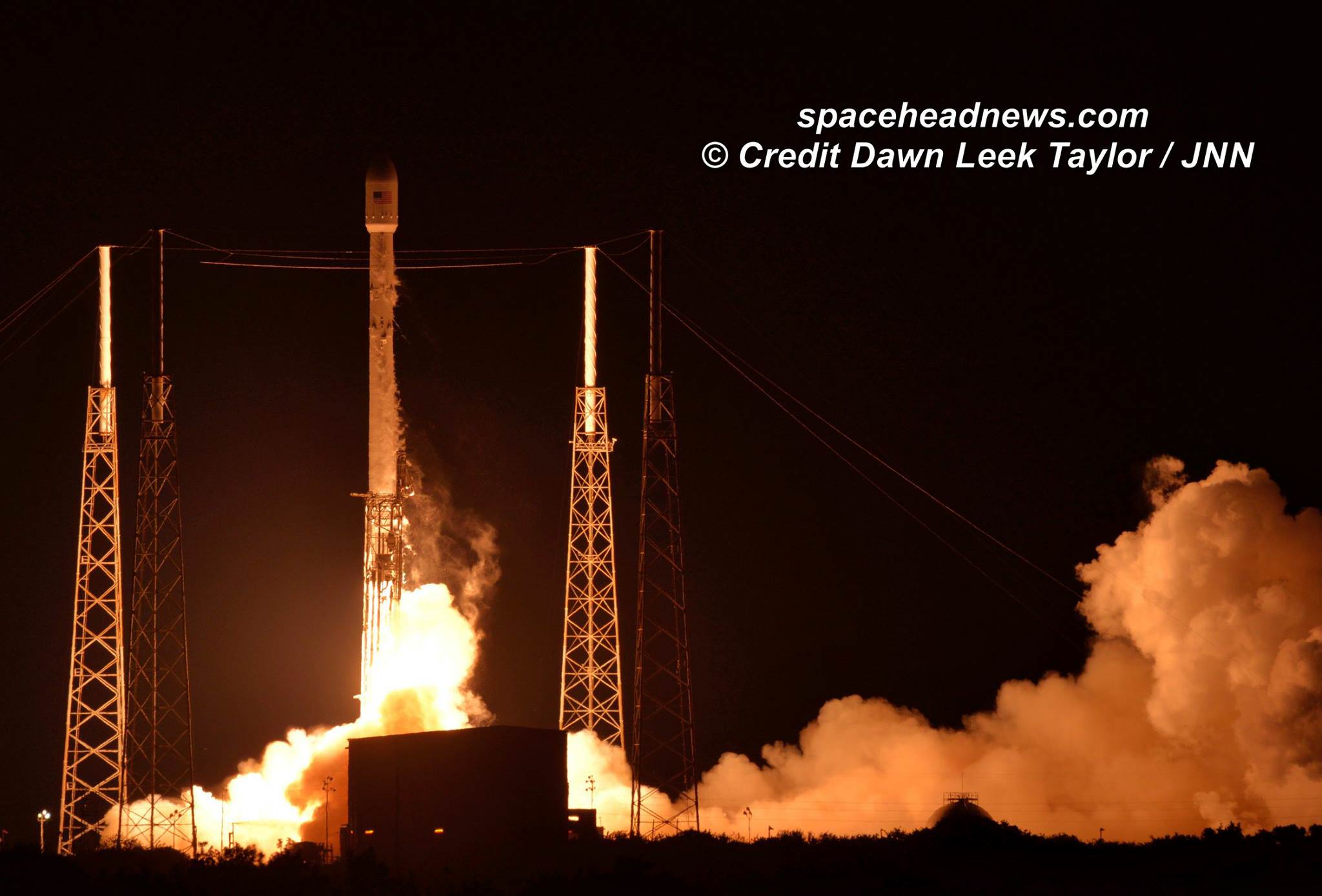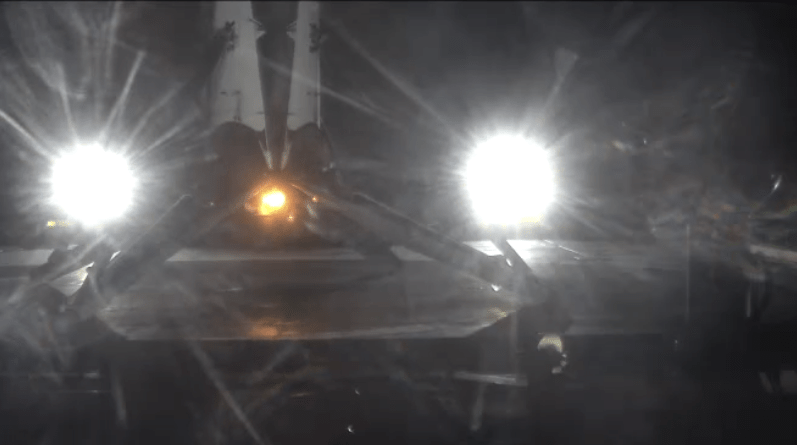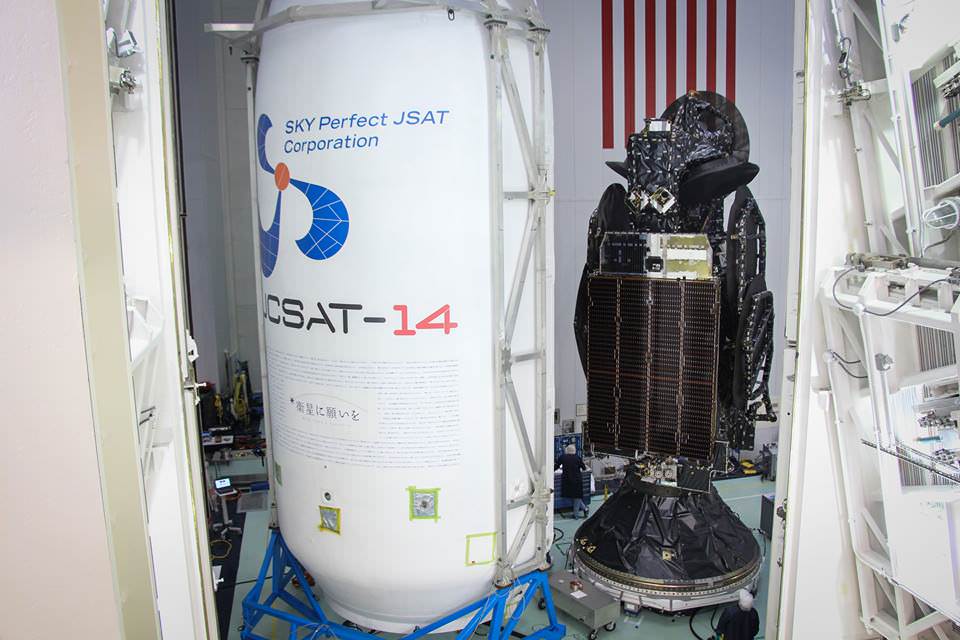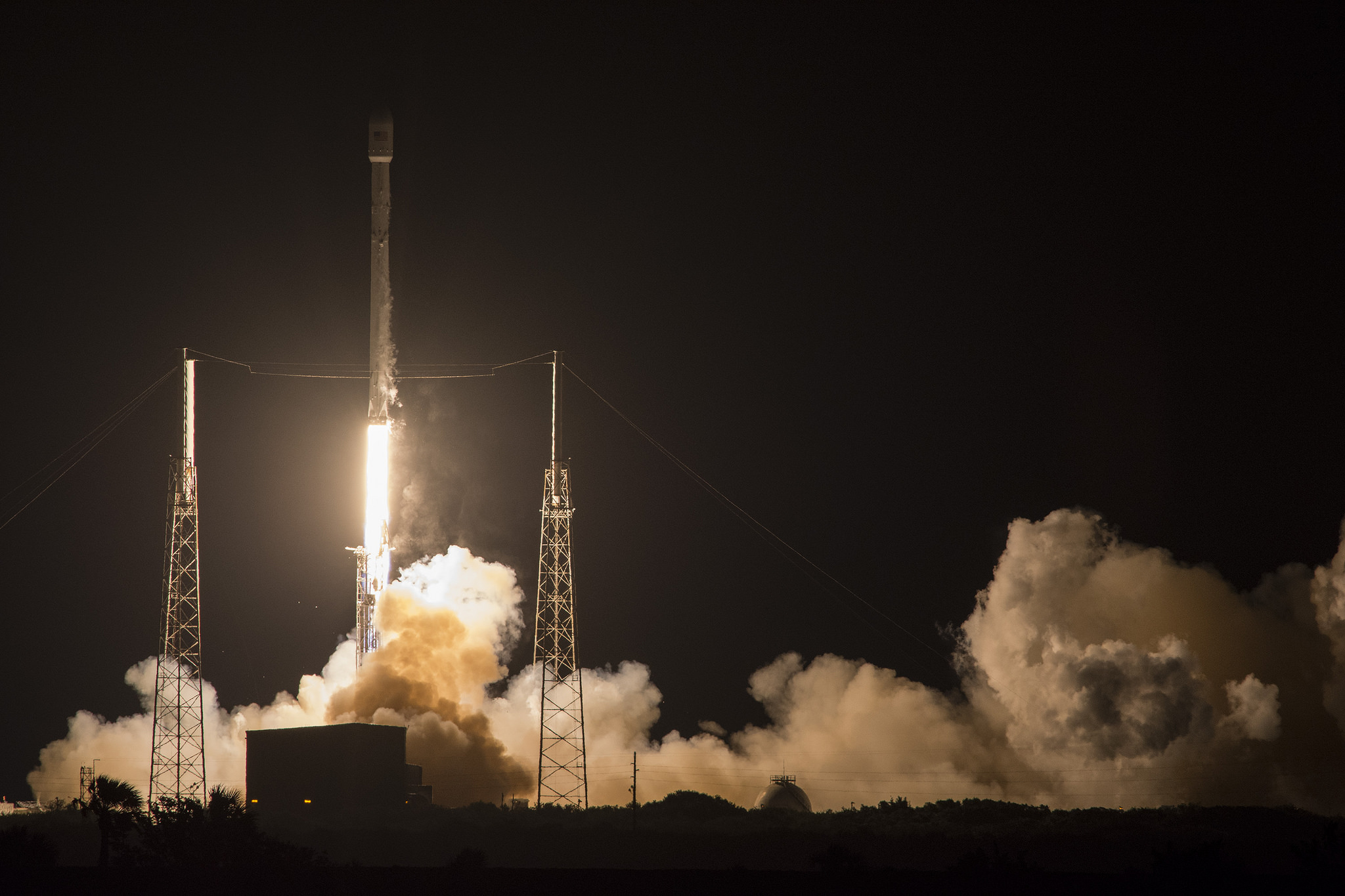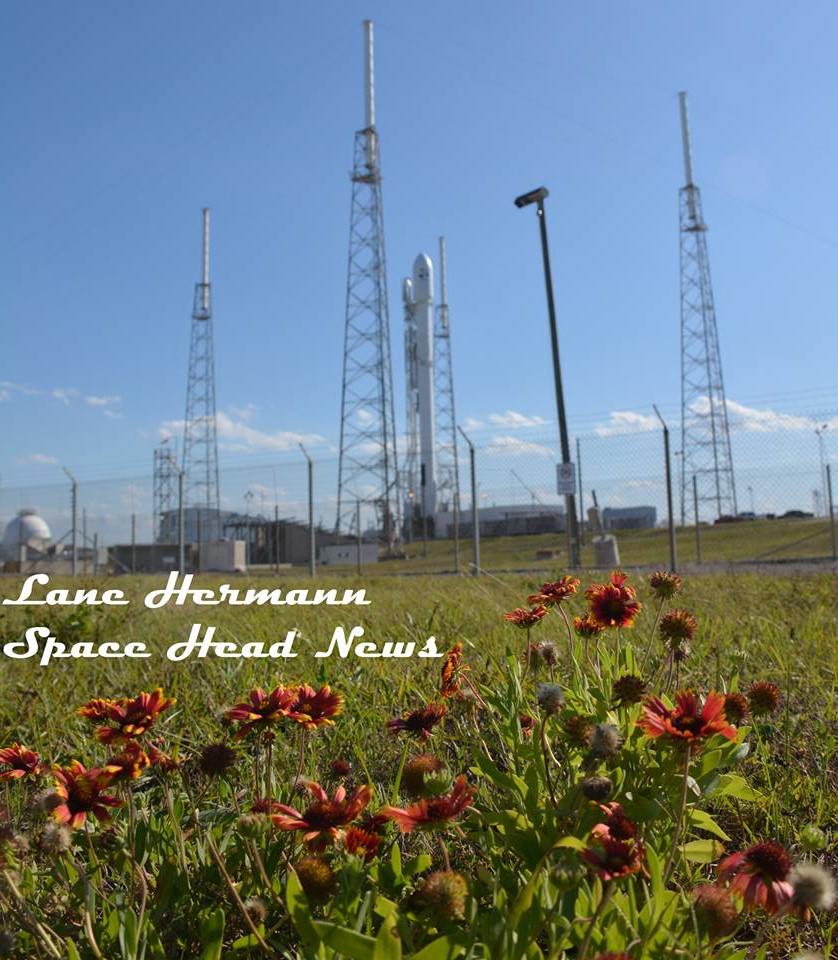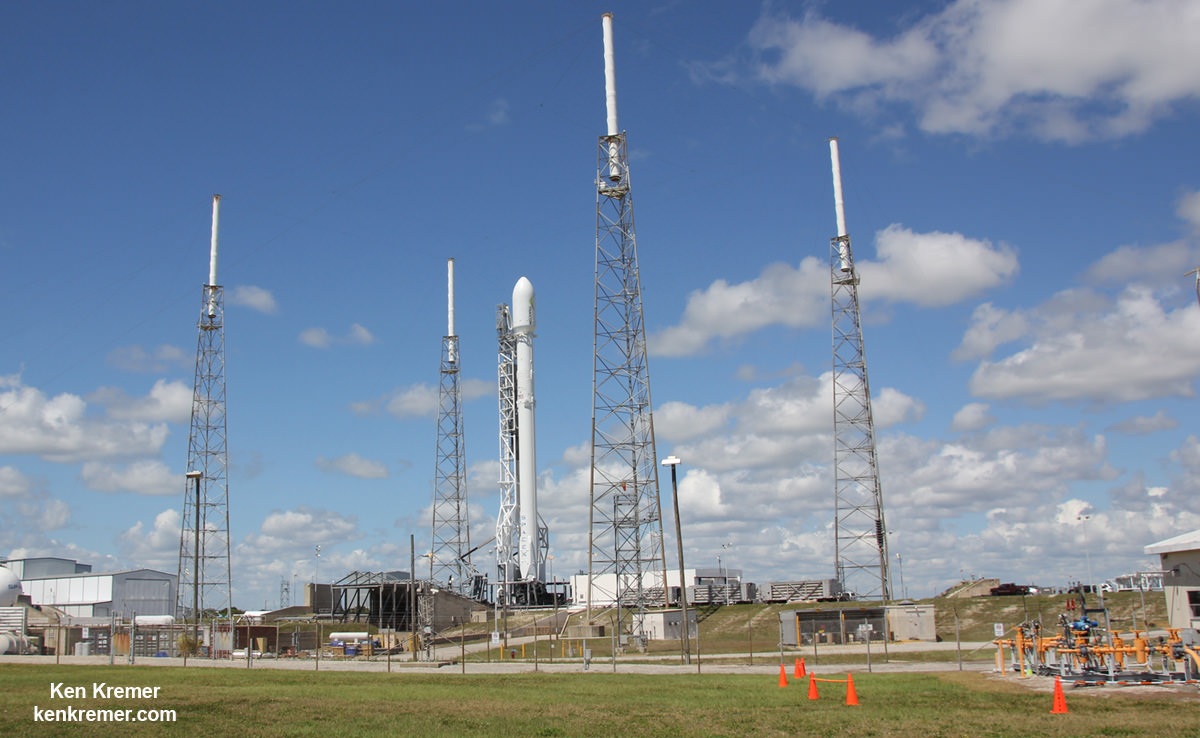
CAPE CANAVERAL AIR FORCE STATION, Fla. – Thursday’s (May 26) planned blastoff of an upgraded SpaceX Falcon 9 rocket on a lucrative commercial mission to deliver a Thai telecommunications satellite to orbit, was postponed in the final stages of the countdown after engineers discovered a technical glitch in the booster’s second stage.
Liftoff of the two stage Falcon 9 is now planned for Friday, May 27 at 5:39 p.m. EDT from Space Launch Complex-40 at Cape Canaveral Air Force Station in Florida.
Soon after liftoff, SpaceX will again execute a sea landing attempt of the first stage booster on a platform a sea following a tough reentry trajectory.
Since the launch window extends two hours, the SpaceX launch team took the time available to work the issue and tried as best they could to resolve it.
But in the end, and more than an hour into the available window, launch controllers decided it was best to stay safe and scrub for the day at about 6:40 p.m. EST and take the opportunity to thoroughly review all the data.
“Out of an abundance of caution, launch postponed until no earlier than tomorrow [May 27] for additional data review” SpaceX said via social media accounts.
Hundreds of millions of dollars are at stake on this commercial flight slated to deliver the Thaicom-8 comsat to a Geostationary Transfer Orbit (GTO) for Thaicom PLC, a leading satellite operator in Asia.
“Falcon 9 & THAICOM 8 spacecraft remain healthy,” SpaceX tweeted.
SpaceX founder and CEO Elon Mush said that the problem was traced to an engine actuator in the second stage wich is critical for delivering Thaicom-8 to its required geostationary orbit.
“There was a tiny glitch in the motion of an upper stage engine actuator,” SpaceX CEO Musk tweeted.
“Probably not a flight risk, but still worth investigating.”
You can watch the launch live on Friday via a special live webcast from SpaceX.
The SpaceX webcast will be available starting at about 20 minutes before liftoff, at approximately 5:19 p.m. EDT- at SpaceX.com/webcast
The two stage Falcon 9 rocket has a two-hour launch window that extends until Friday, May 27 at 7:39 p.m. EDT.
The Florida weather is much less favorable than yesterday. Air Force meteorologists are predicting only a 40 percent chance of favorable weather conditions at launch time Friday. The major concerns could be violations of the Thick Cloud Layer Rule, Cumulus Cloud Rule, and Liftoff Winds.
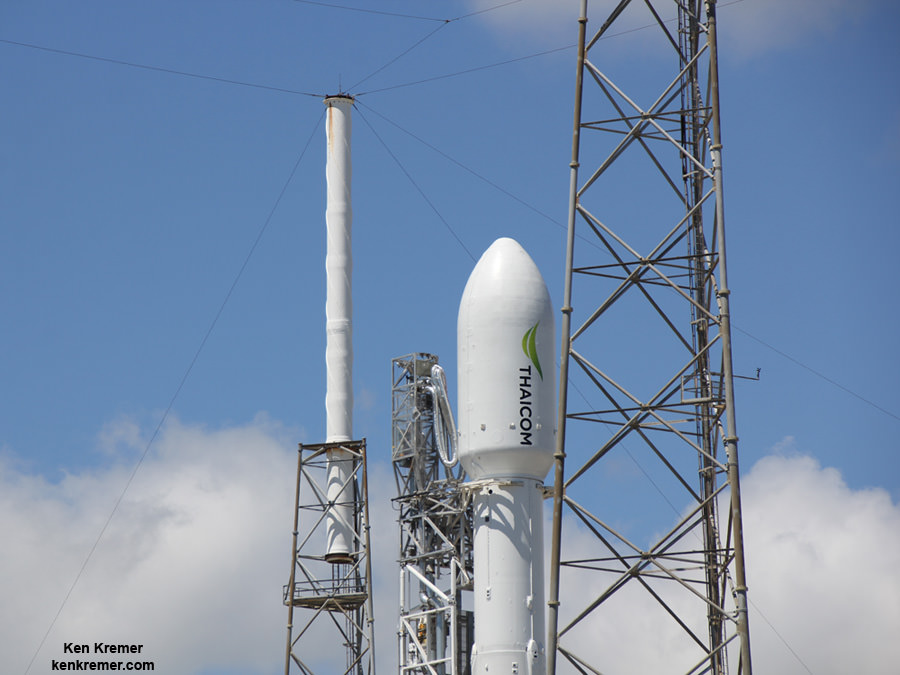
The backup launch opportunity is Saturday, May 28. The weather outlooks is somewhat better at a 50 percent chance of favorable conditions.
Watch this truly cool video showing the rocket rollout to pad 40, rocket erection and finally the short static fire test carried out on Tuesday May 24, 2016.
Video Caption: SpaceX – Thaicom 8 – Roll Out – Lift – Static Fire Test – 05-24-2016. Credit: USLaunchReport
Thaicom-8 was built by aerospace competitor Orbital ATK, based in Dulles, VA. It will support Thailand’s growing broadcast industry and will provide broadcast and data services to customers in South Asia, Southeast Asia and Africa.
The Falcon 9 launch is the 5th this year for SpaceX.
Tune in to the SpaceX webcast Thursday afternoon to catch all the exciting action !!
Watch for Ken’s on site reports direct from Cape Canaveral and the SpaceX launch pad.
Stay tuned here for Ken’s continuing Earth and planetary science and human spaceflight news.
………….
Learn more about SpaceX Falcon 9 rocket, ULA Atlas rocket, Orbital ATK Cygnus, ISS, Boeing, Space Taxis, Mars rovers, Orion, SLS, Antares, NASA missions and more at Ken’s upcoming outreach events:
May 27: “SpaceX, ULA, SLS, Orion, Commercial crew, Curiosity explores Mars, Pluto and more,” Kennedy Space Center Quality Inn, Titusville, FL, late evening


